第49回知覚コロキウム(東北大学主催)・ホテルニュー水戸屋
2016年3月15日(火) )14:30-15:00
二種類の並置混色とホワイト効果
立命館大学文学部人文学科心理学専攻(心理学域) 北岡 明佳 email HP
(立命館大学 文学部 心理学専攻)
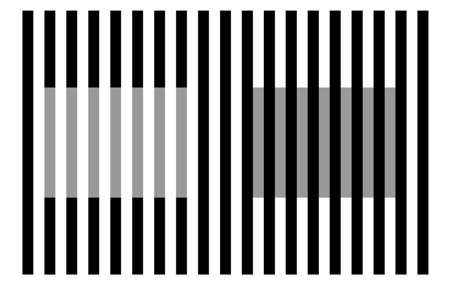
ホワイト効果(White's effect)・・・左右の灰色は同じであるが、左半分の方が明るく見える。
White, M. (1979) A new effect on perceived lightness. Perception, 8, 413-416.
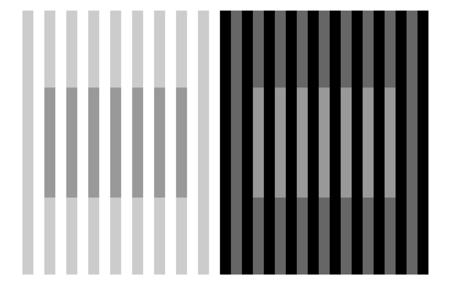
逆ホワイト効果(inverted White's effect)・・・・・・左右の灰色は同じであるが、左半分の方が暗く見える。
Ripamonti, C. and Gerbino, W. (2001) Classical and inverted White’s effects. Perception, 30, 467-488.
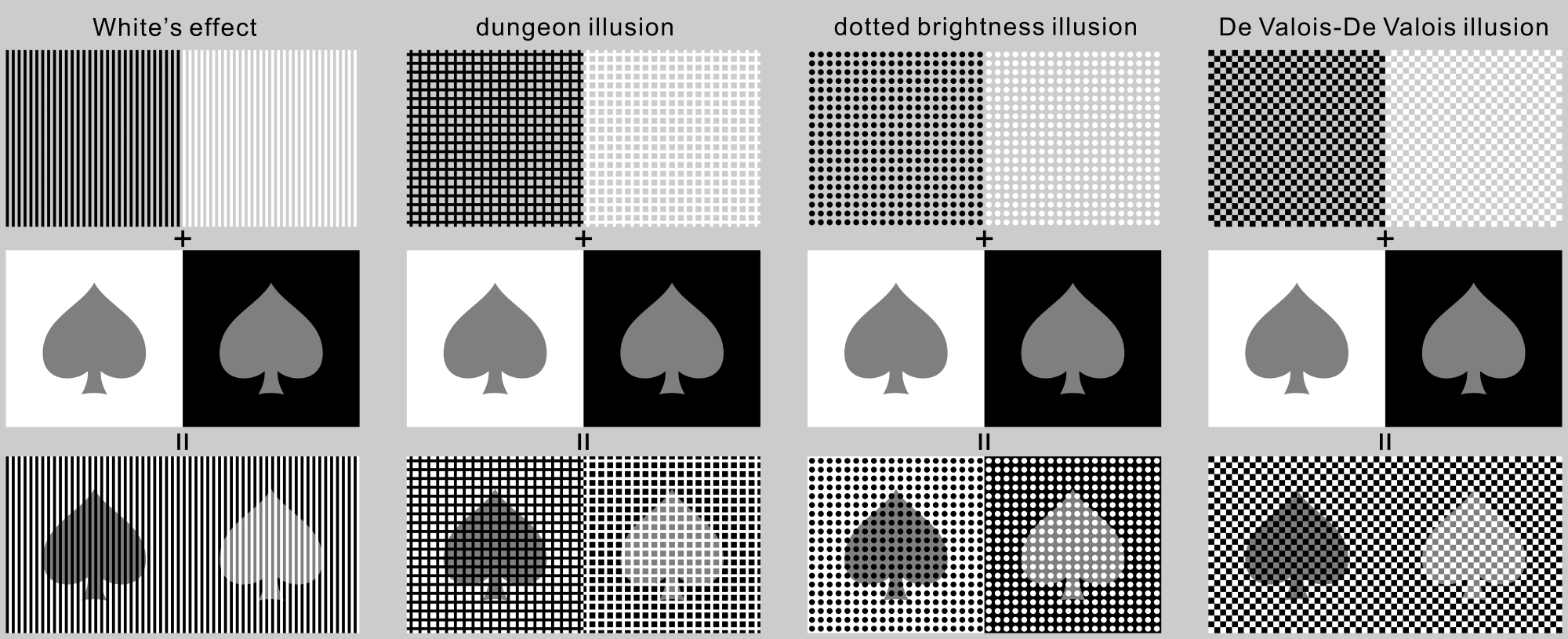
「4種類の明るさの錯視の作り方」
物理的に同じ明るさ(R=127, G=127, B=127)のスペードが錯視によって暗いスペードと明るいスペードに見える。左から、ホワイト効果(White's effect)、土牢錯視(dungeon illusion)、ドット明るさ錯視(dotted brightness illusion)、デヴァロイス・デヴァロイス錯視(De Valois-De Valois illusion)である。 上図の高解像度ファイルはこちら(8000 x 3262 pixel, 5MB)。
Copyright Akiyoshi Kitaoka 2009 (June 1)
References
| White's effect | White, M. (1979) A new effect on perceived lightness. Perception, 8, 413-416. |
| dungeon illusion | Bressan, P. (2001) Explaining lightness illusions. Perception, 30, 1031-1046. |
| dotted brightness illusion | White, M. (1982) The assimilation-enhancing effect of a dotted surround
upon a dotted test region. Perception, 11, 103-106. |
| De Valois-De Valois illusion | De Valois, R. L. and De Valois, K. K. (1988) Spatial Vision. New York: Oxford University Press. |
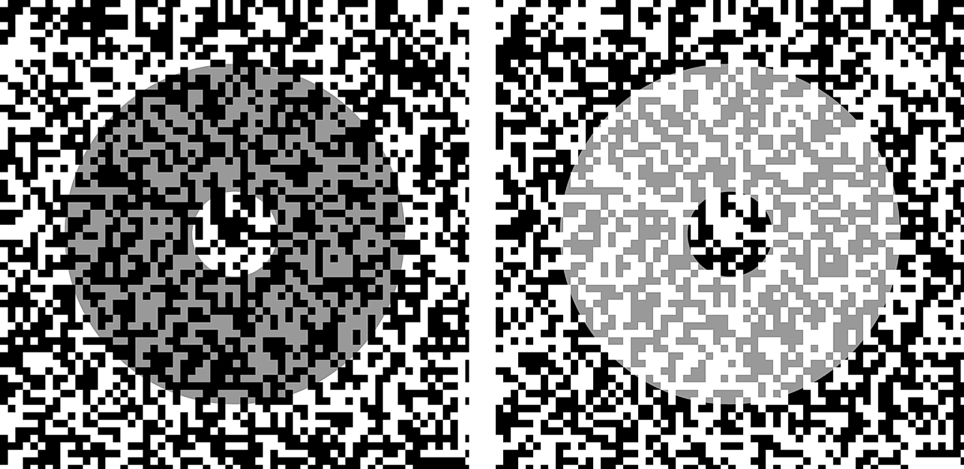
Stuart's ring

「4種類の明るさの「逆」錯視の作り方」
物理的に同じ明るさ(R=127, G=127, B=127)のスペードが錯視によって明るいスペードと暗いスペードに見える。左から、逆ホワイト効果(inverted White's effect)、逆土牢錯視("inverted" dungeon illusion)、逆ドット明るさ錯視("inverted" dotted brightness illusion)、逆デヴァロイス・デヴァロイス錯視("inverted" De Valois-De Valois illusion)である。 上図の高解像度ファイルはこちら(8000 x 3262 pixel, 5MB)。
Copyright Akiyoshi Kitaoka 2009 (June 1)
逆ホワイト効果(inverted White's effect): Ripamonti, C. and Gerbino, W. (2001) Classical and inverted White’s effects. Perception, 30, 467-488.
並置混色には2種類ある
Spatial color mixture: additive color mixture (top) and subtractive one (bottom)
加法混色
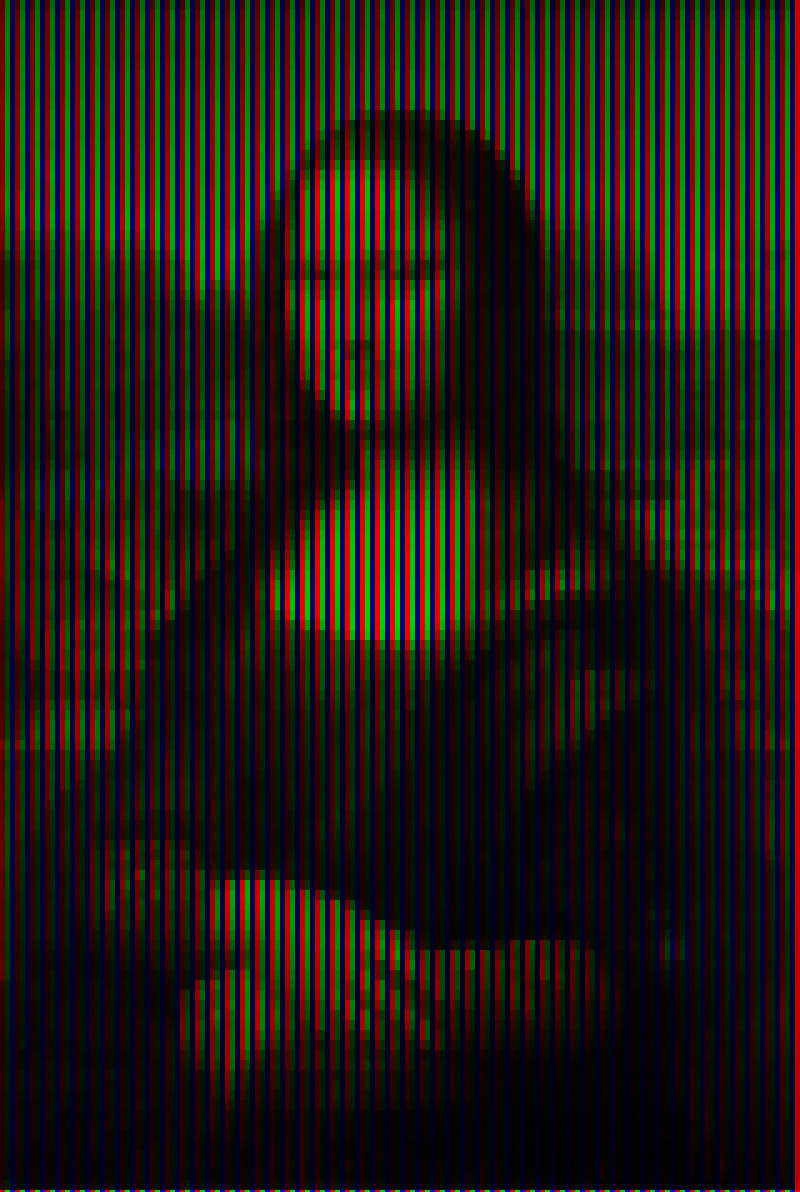
減法混色
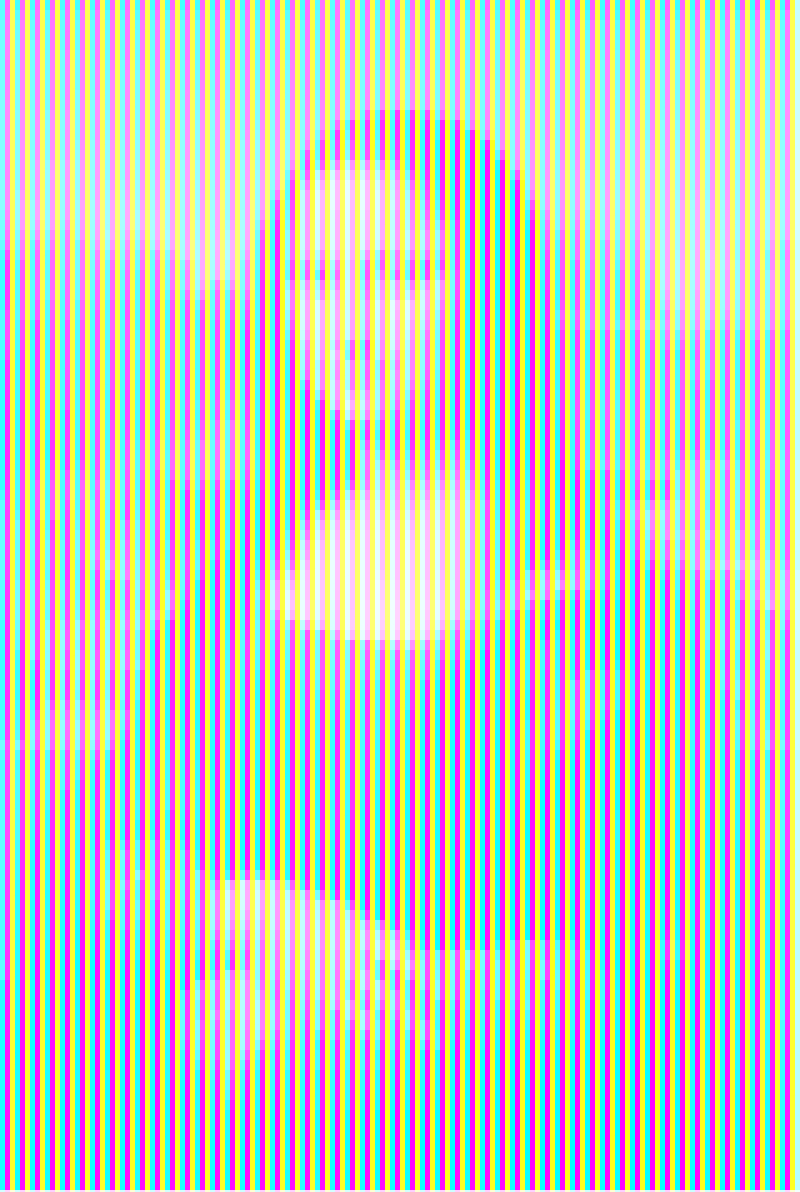
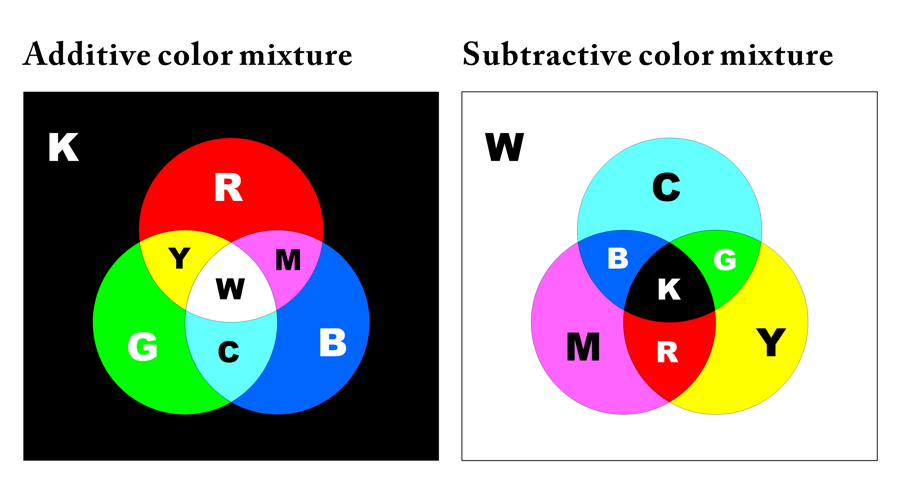
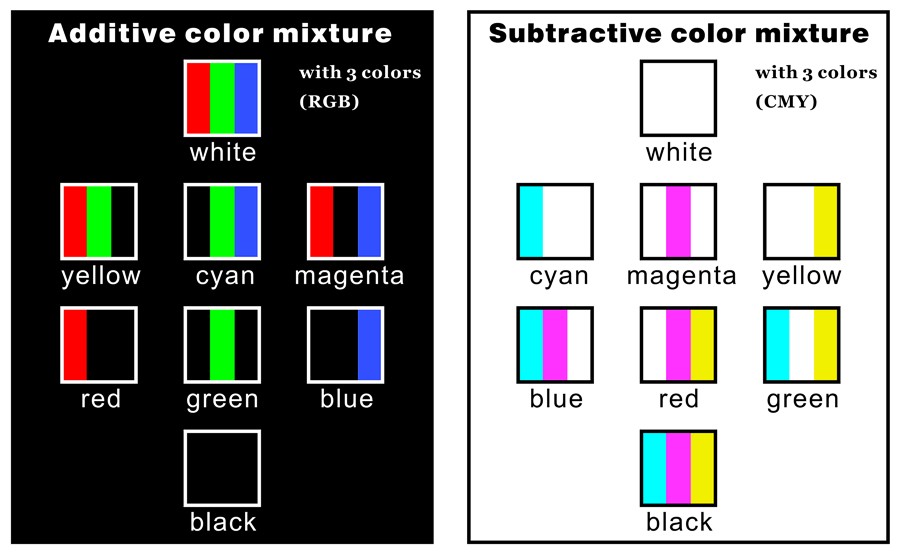
Spatial color mixture: additive color mixture (left) and subtractive one (right)
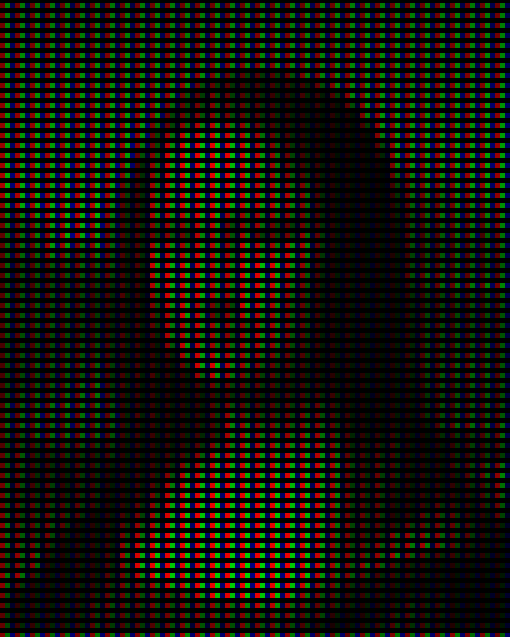
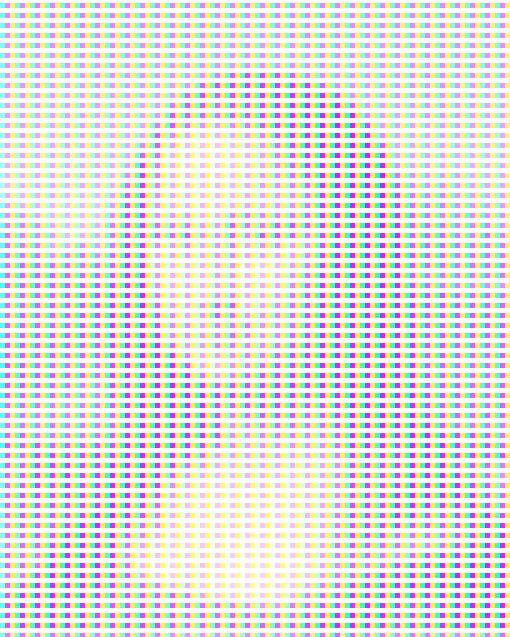
Spatial color mixture: additive color mixture (left) and subtractive one (right)
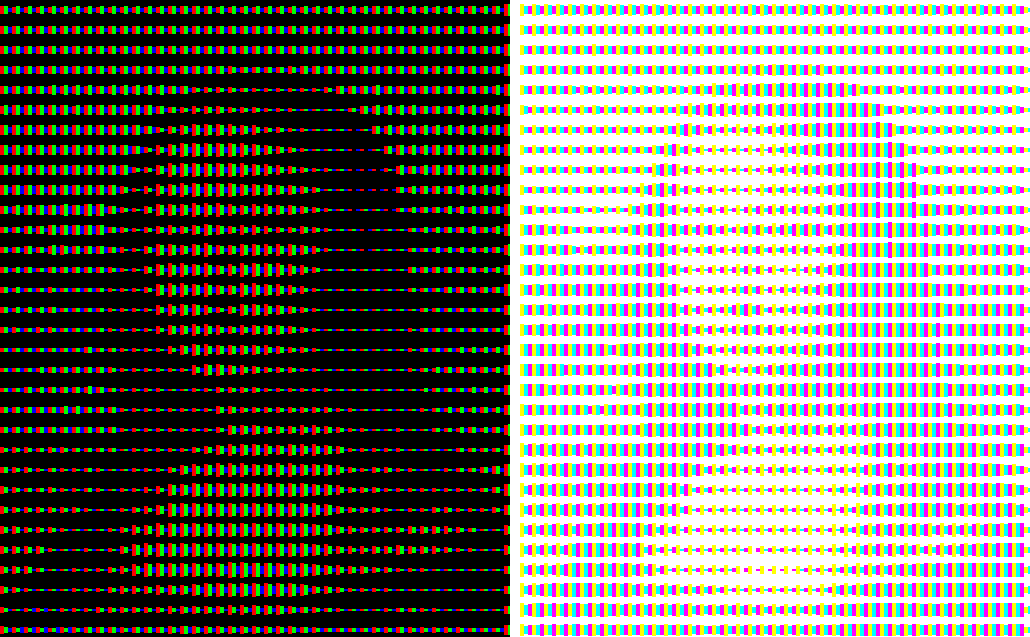
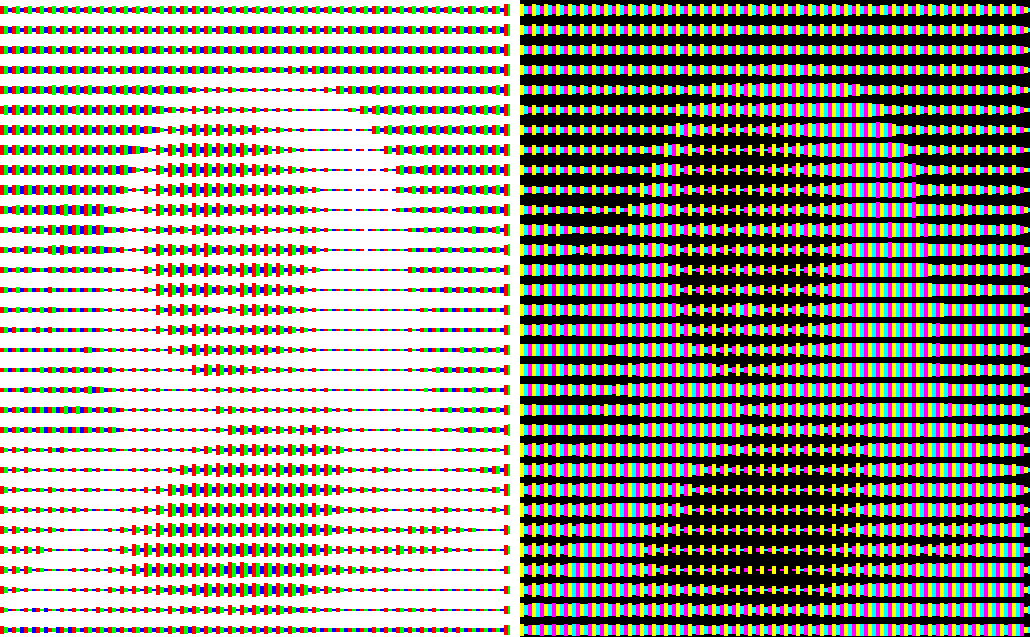
Spatial color mixture: additive color mixture (left) and subtractive one (right)
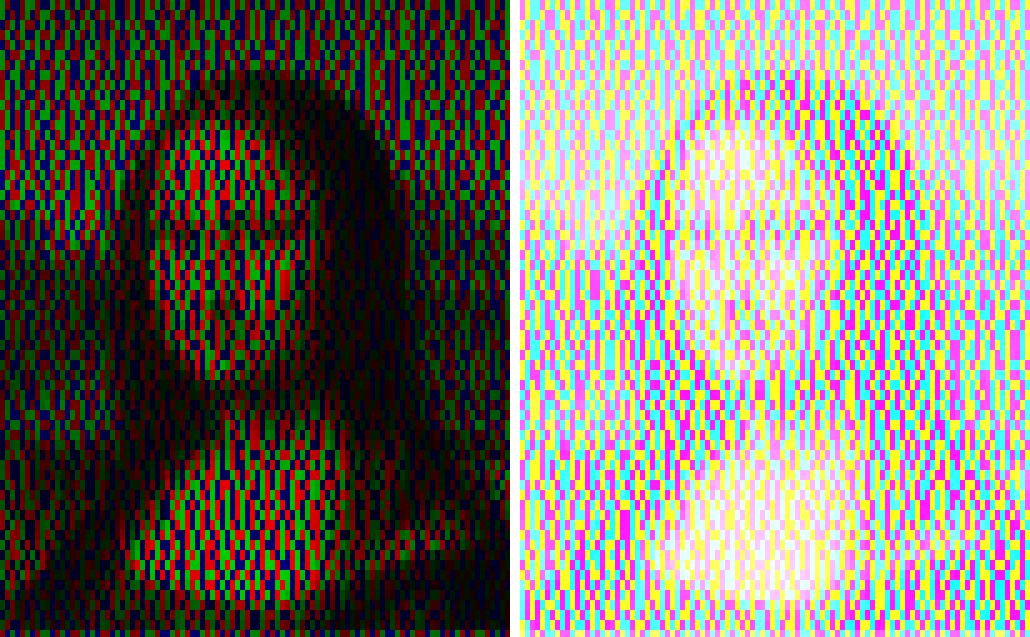
Spatial color mixture: additive color mixture (left) and subtractive one (right)
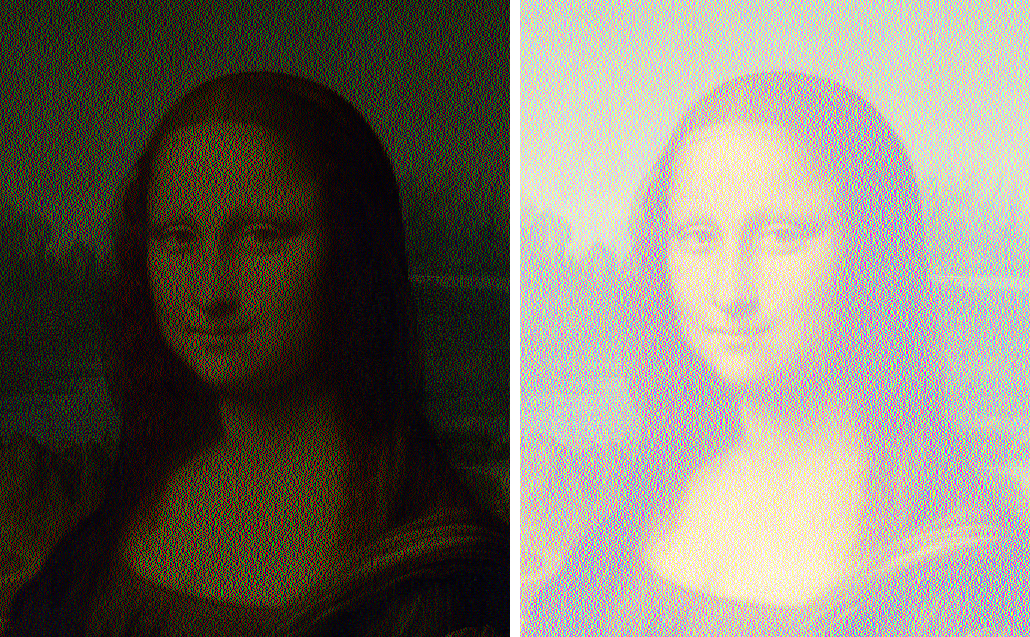
Spatial color mixture: additive color mixture (left) and subtractive one (right)
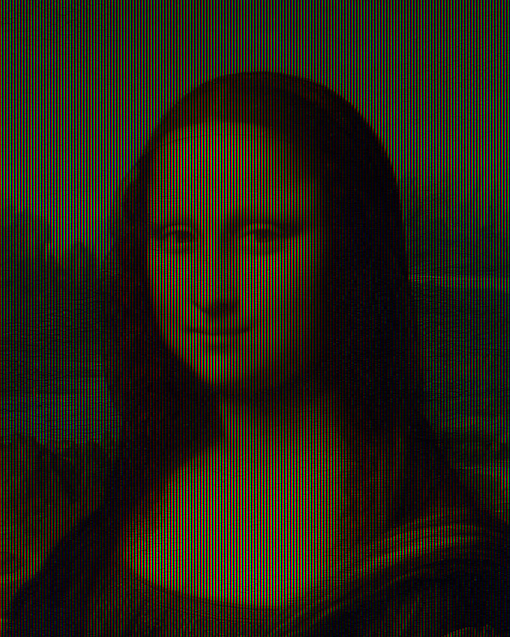
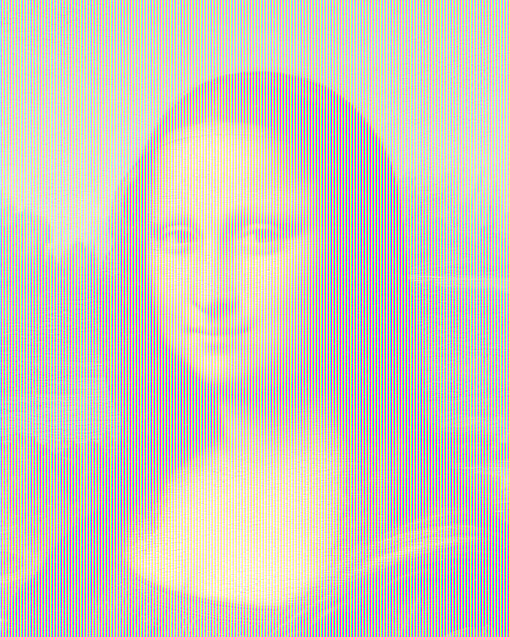
Spatial color mixture with three colors: additive color mixture (top) and subtractive one (bottom)
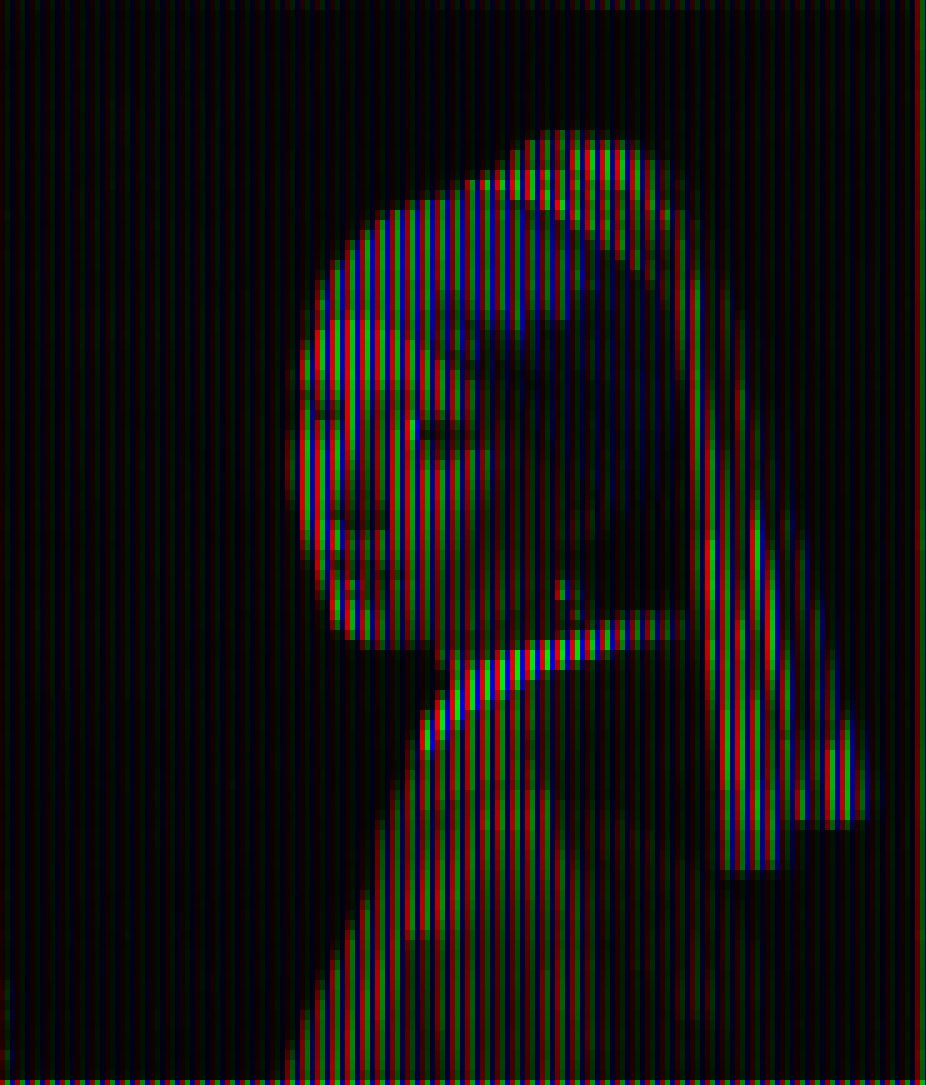
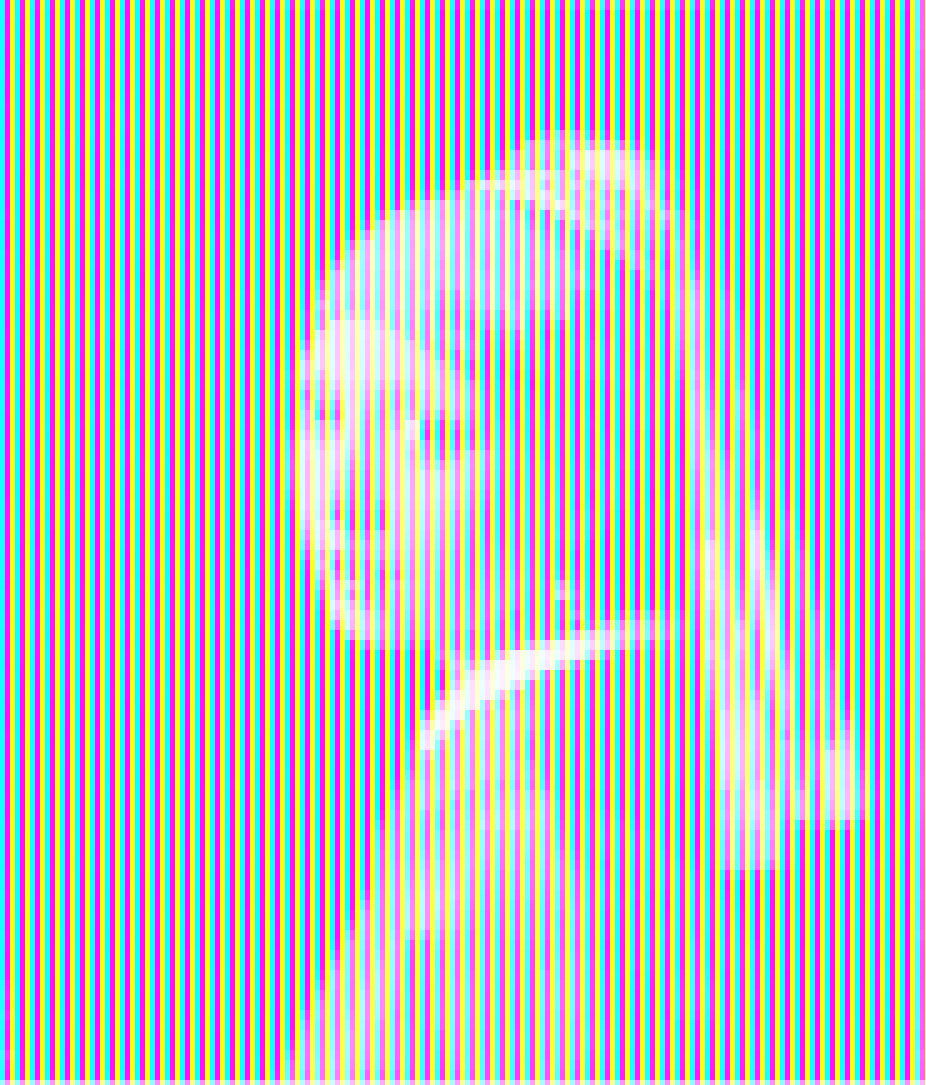
Spatial color mixture with three colors: additive color mixture (left) and subtractive one (right)

Spatial color mixture with three colors: additive color mixture (left) and subtractive one (right)
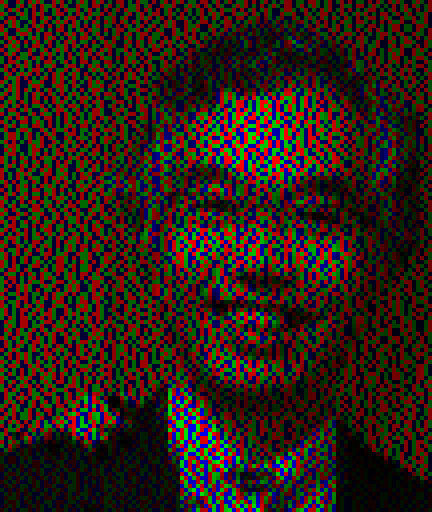
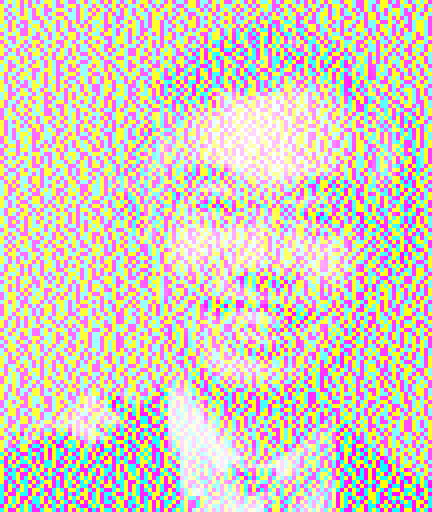

Spatial color mixture with three colors: additive color mixture (left) and subtractive one (right)
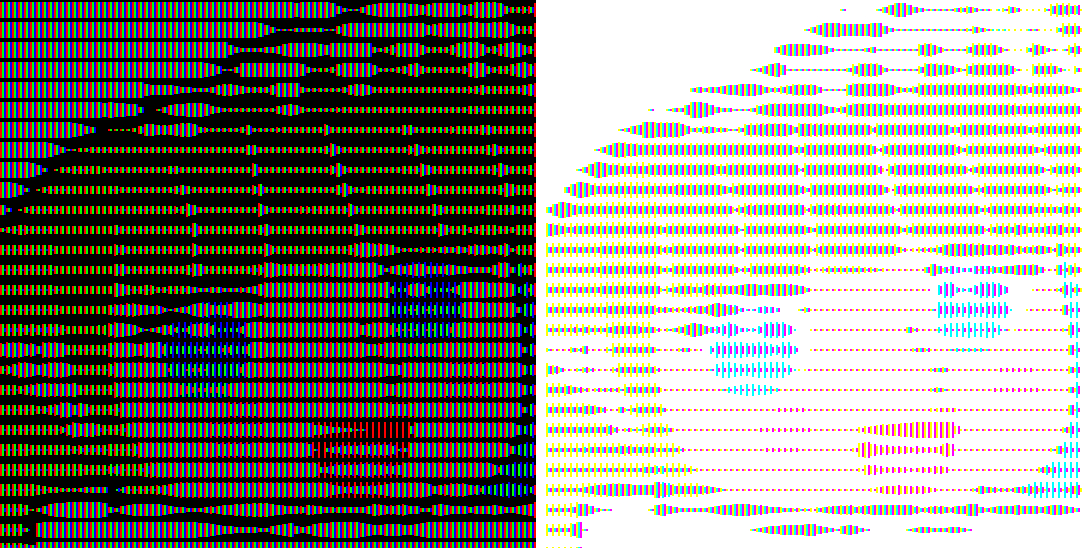

オリジナル図
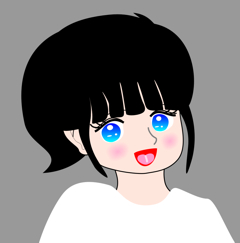
加法混色(左) と 減法混色(右)
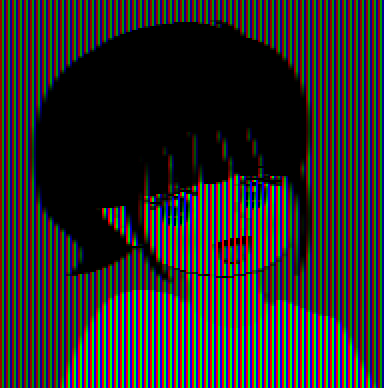
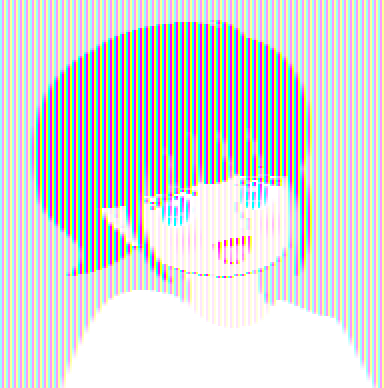
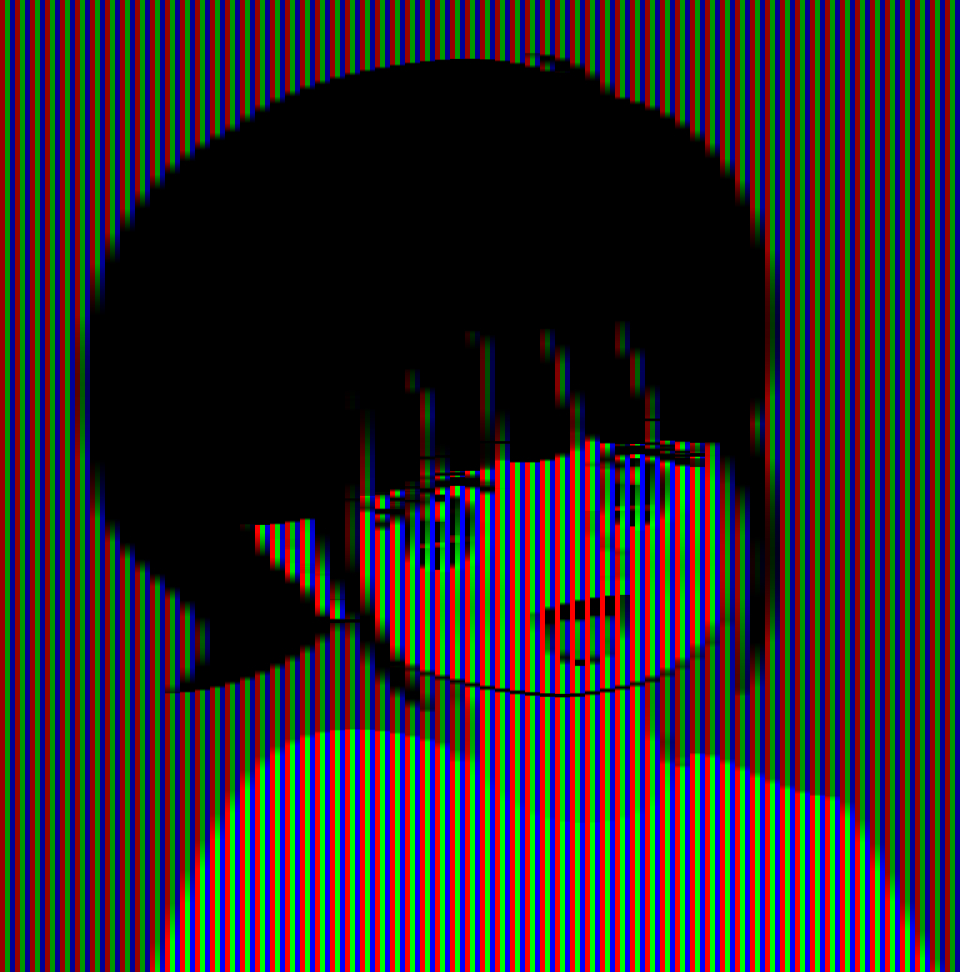
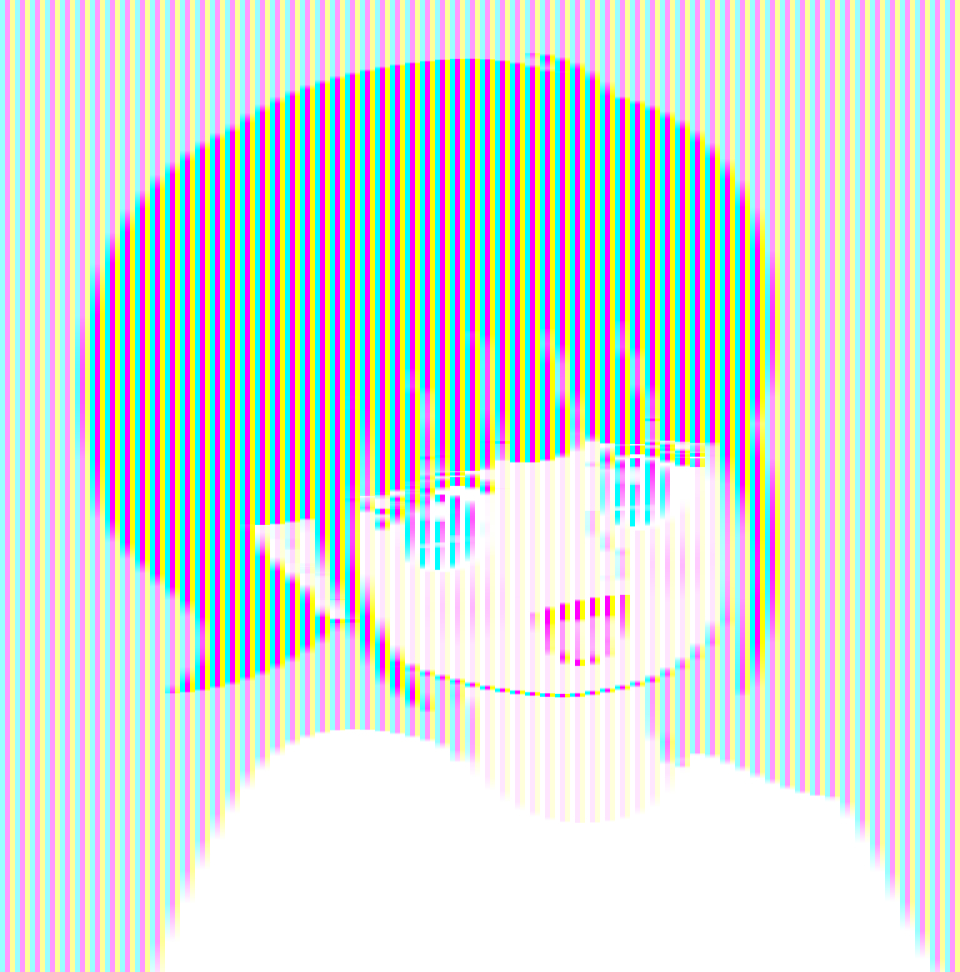
Spatial color mixture with two colors (red and cyan): additive color mixture (left) and subtractive one (right)
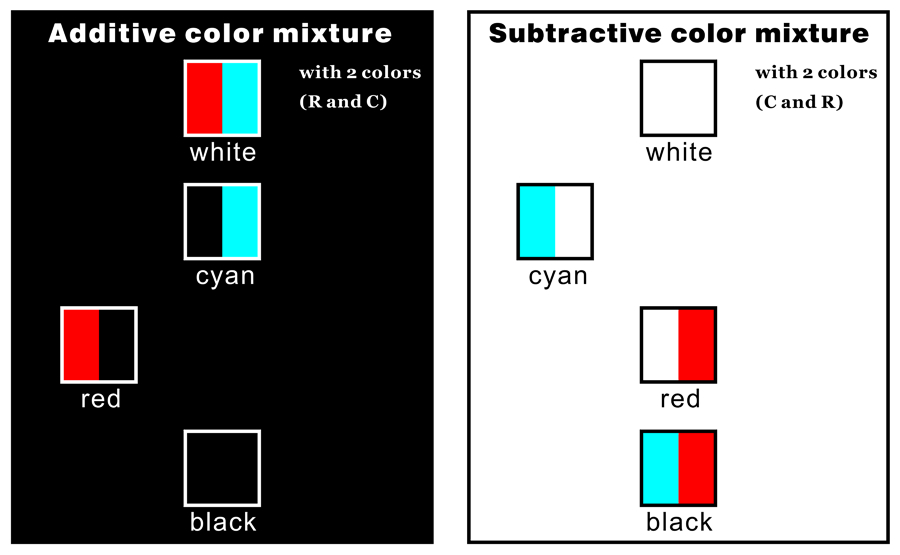
s.jpg)
s.jpg)
.jpg)
.jpg)
オリジナル図
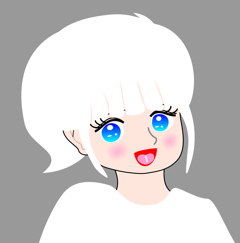
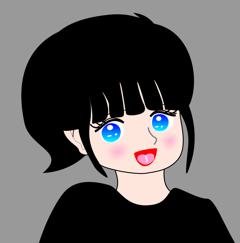
s.jpg)
bs.jpg)
「白い髪と服のおねえさんと黒い髪と服のおねえさん」
髪と服はどちらも赤色とシアン色の縞模様でできていて同じであるが、加法混色か減法混色かの違いによってそれぞれ白と黒に見える。
Copyright Akiyoshi Kitaoka 2015 (July 15)
拡大画像
.jpg)
b.jpg)
さらなる拡大画像
Lp.jpg)
bLp.jpg)
bhH2.jpg)
あしゅら男爵化
b-RC(RGB)s.gif)
早変わり
(GIF アニメ)
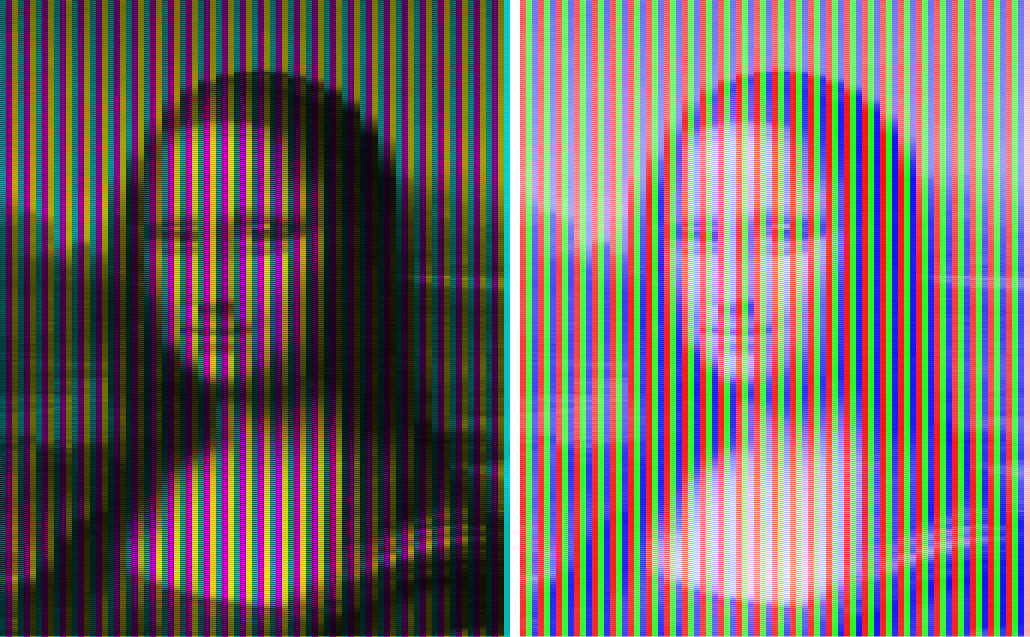
「CMY加法混色とRGB減法混色のモナリザ」
CMYを原色とした加法混色で並置混色のモナリザ(左)とRGBを原色とした減法混色で並置混色のモナリザ(右)
Copyright Akiyoshi Kitaoka 2016 (March 13)
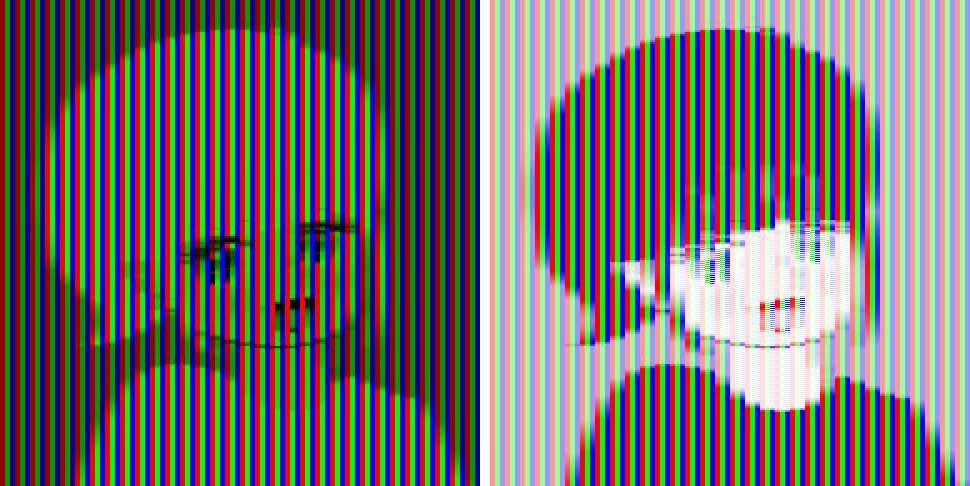
「白い髪と服のおねえさんと黒い髪と服のおねえさん RGB」
髪と服はどちらも赤・緑・青の縞模様でできていて同じであるが、加法混色か減法混色かの違いによってそれぞれ白と黒に見える。
Copyright Akiyoshi Kitaoka 2016 (March 13)
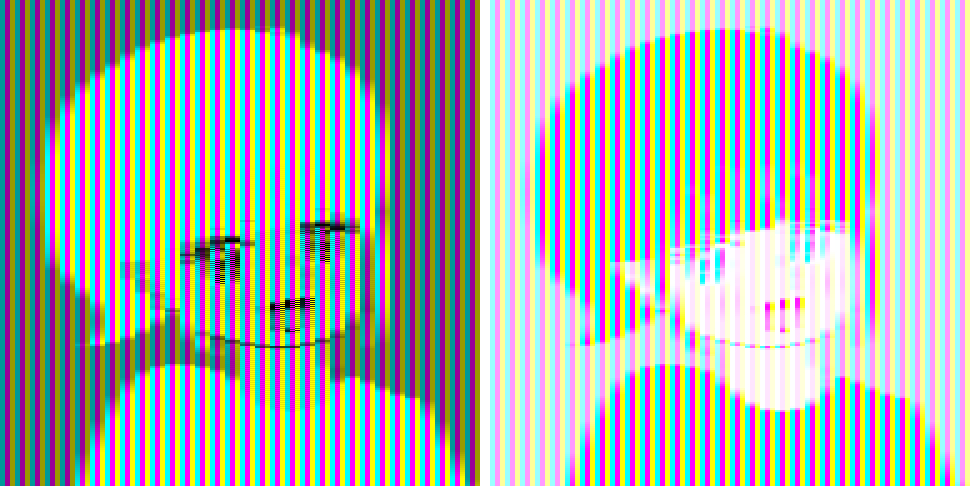
「白い髪と服のおねえさんと黒い髪と服のおねえさん CMY」
髪と服はどちらもシアン・マゼンタ・イエローの縞模様でできていて同じであるが、加法混色か減法混色かの違いによってそれぞれ白と黒に見える。
Copyright Akiyoshi Kitaoka 2016 (March 13)
明るさの恒常性錯視との関係
加法混色 減法混色
h.jpg)
bh.jpg)
.jpg)
.jpg)
↓↑ 類似 ↓↑ 類似
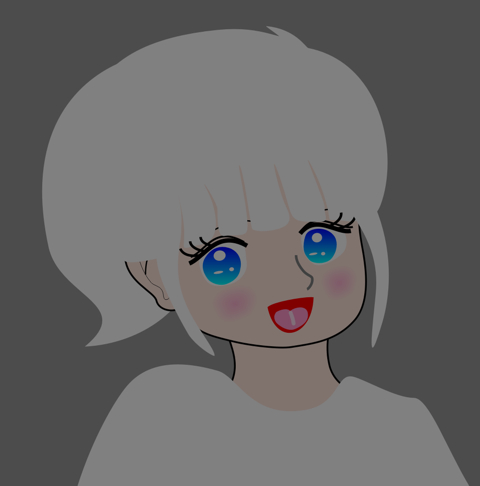
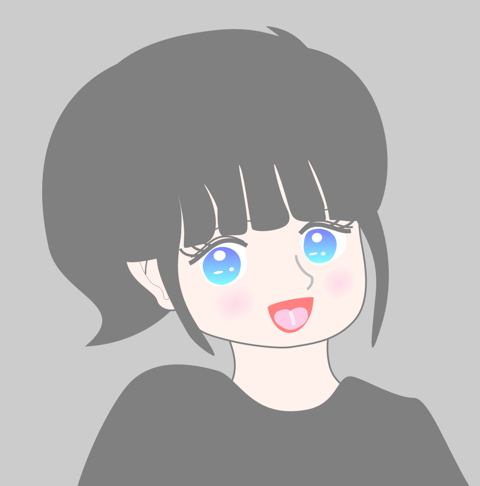
↑ 乗法的色変換(黒50% sRGB) ↑ 加法的色変換(白50% sRGB)
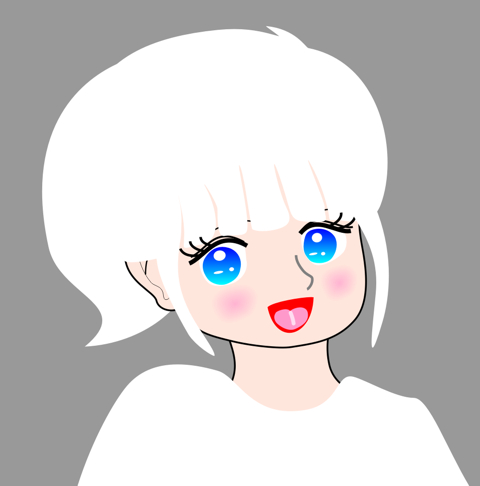
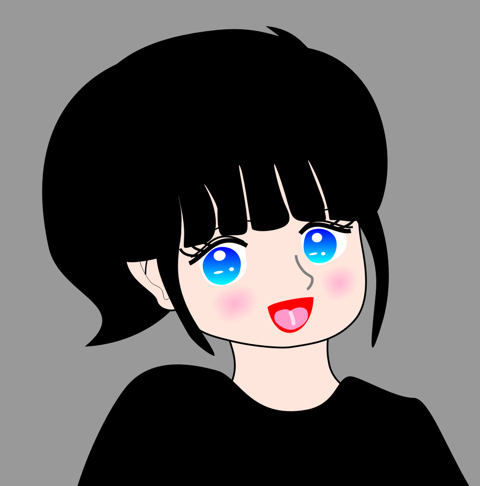
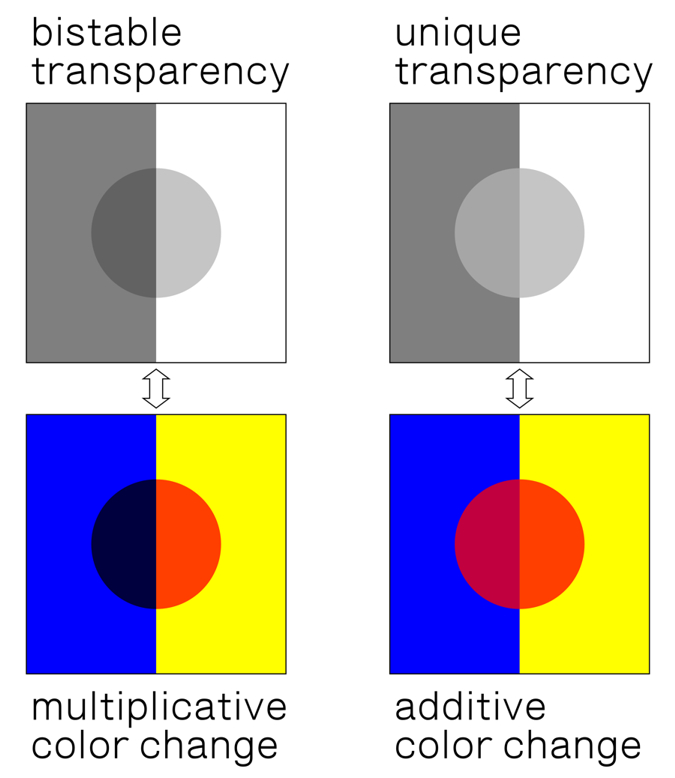
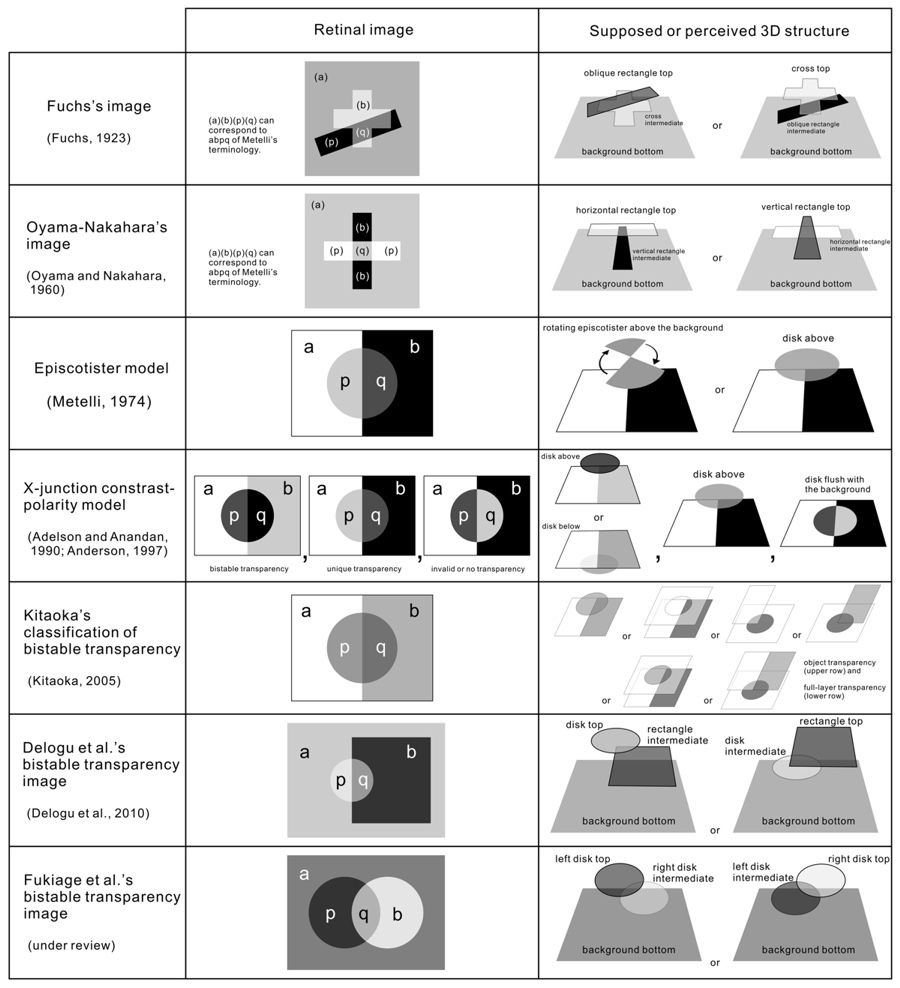
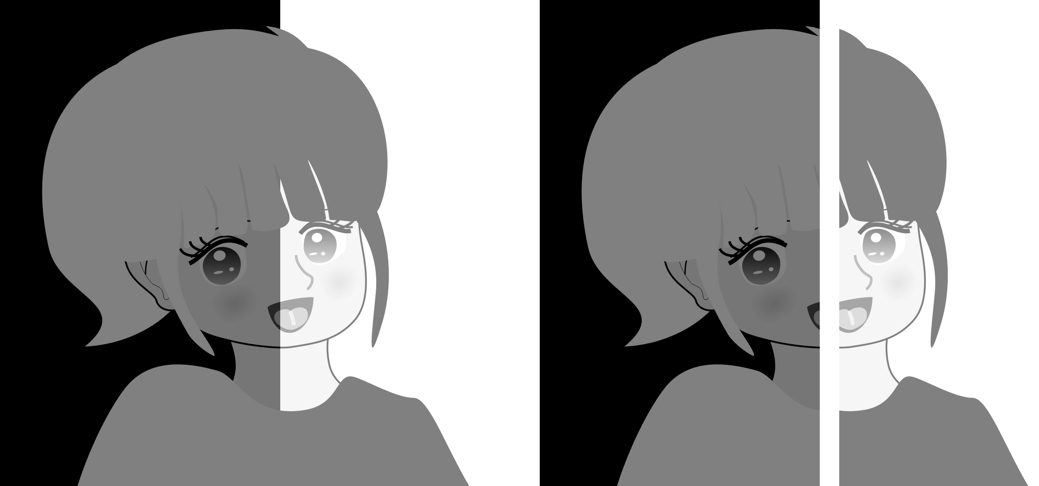
「あしゅら男爵錯視」
髪と服は左半身と右半身がくっついていると同じ灰色であることがわかるが(左)、離れていると明るさが異なって見える(左が明るく右が暗く見える)(右)。コフカの環(下図A)と同型。
Copyright Akiyoshi Kitaoka 2015 (September 5)
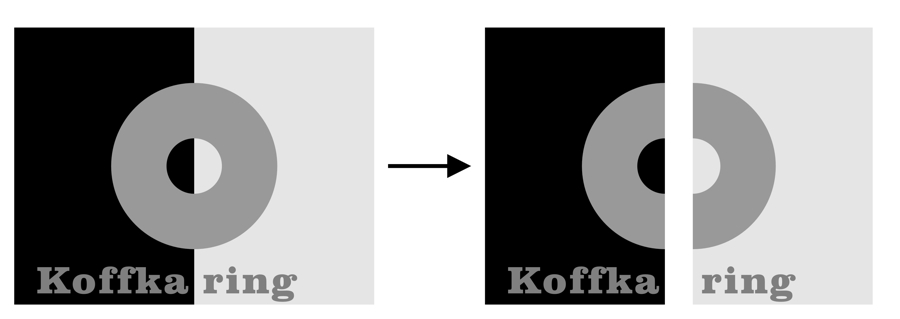
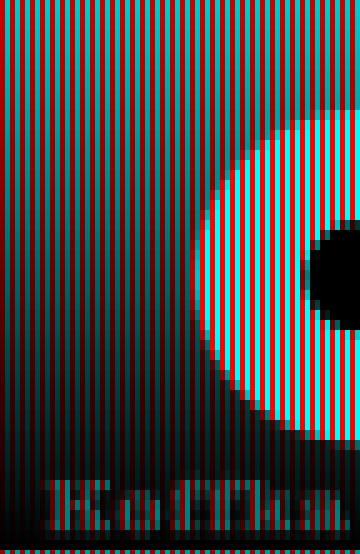
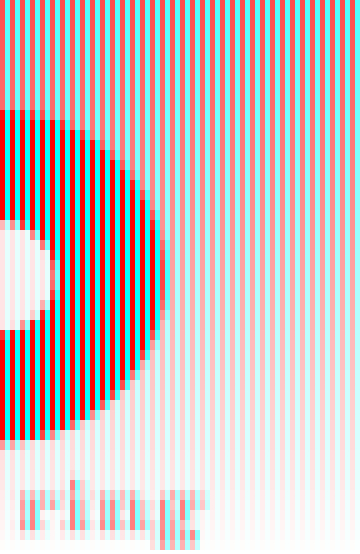
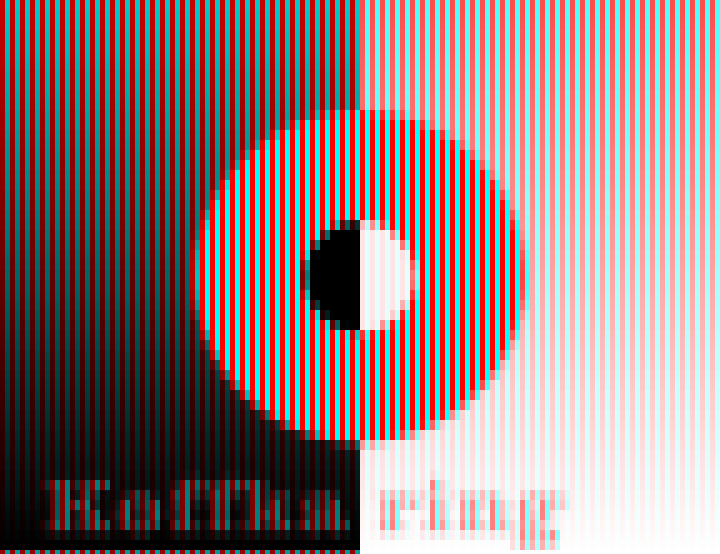
図地分離錯視との関係
(再掲)


↓ 等間隔に黒線を乗せる ↓ 等間隔に白線を乗せる
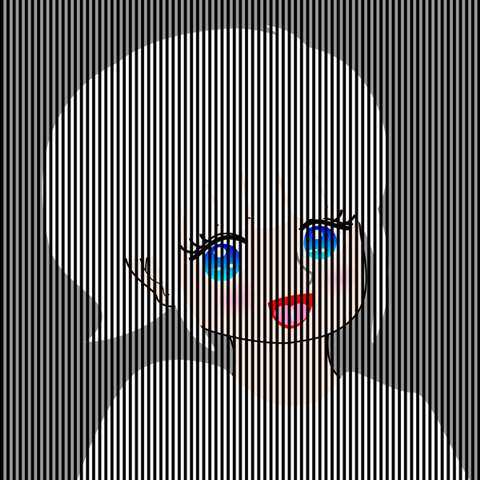
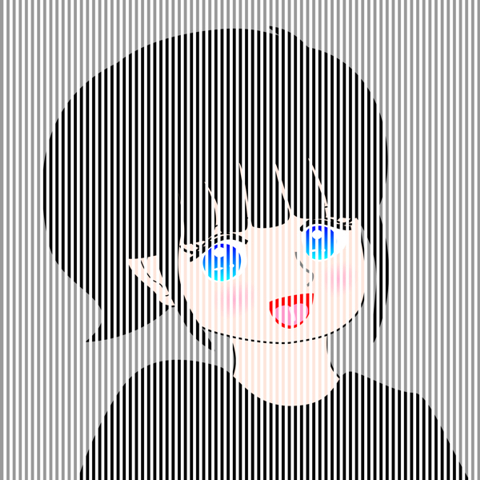
左右とも髪と服は白と黒の縞模様でできていて全く同じであるが、左は白く見え、右は黒く見える。
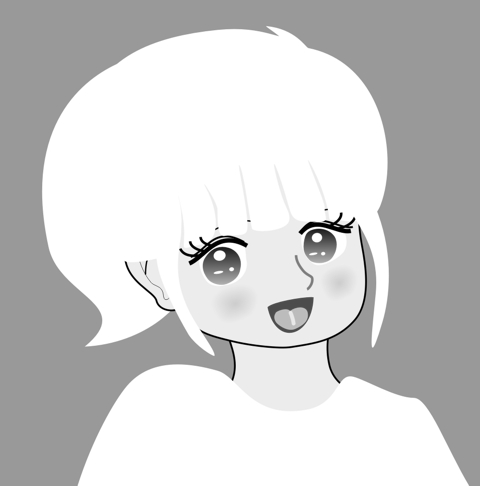
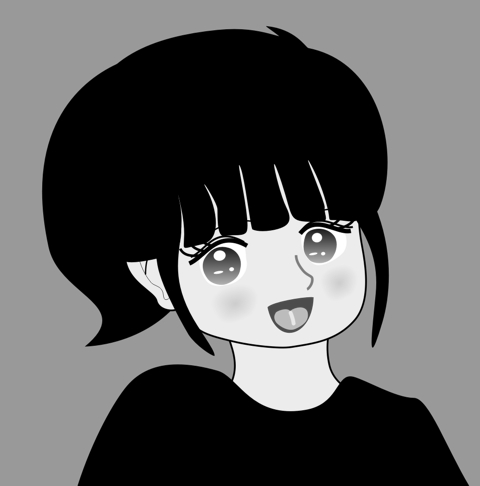
↓ 等間隔に黒線を乗せる ↓ 等間隔に白線を乗せる
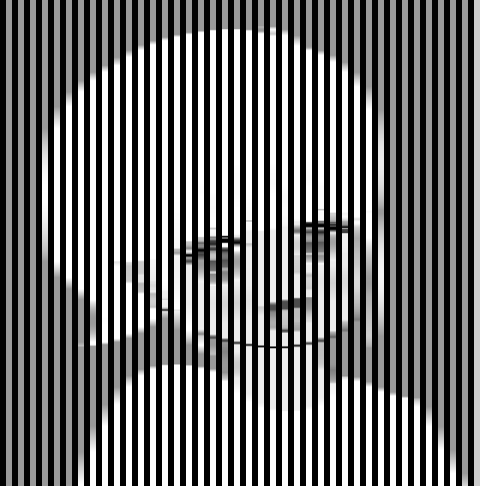
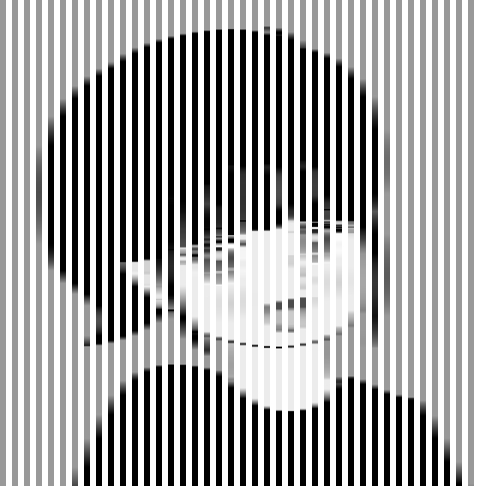
左右とも髪と服は白と黒の縞模様でできていて全く同じであるが、左は白く見え、右は黒く見える。
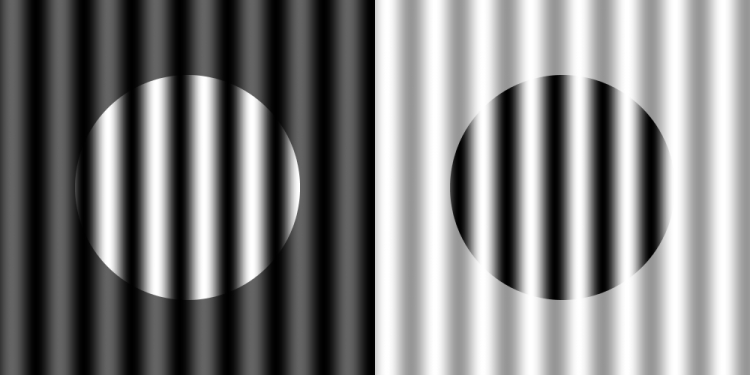
「図地分離による明るさ錯視」・・・左右の円内は同じ縞模様であるが、左は白い円、右は黒い円が見える。
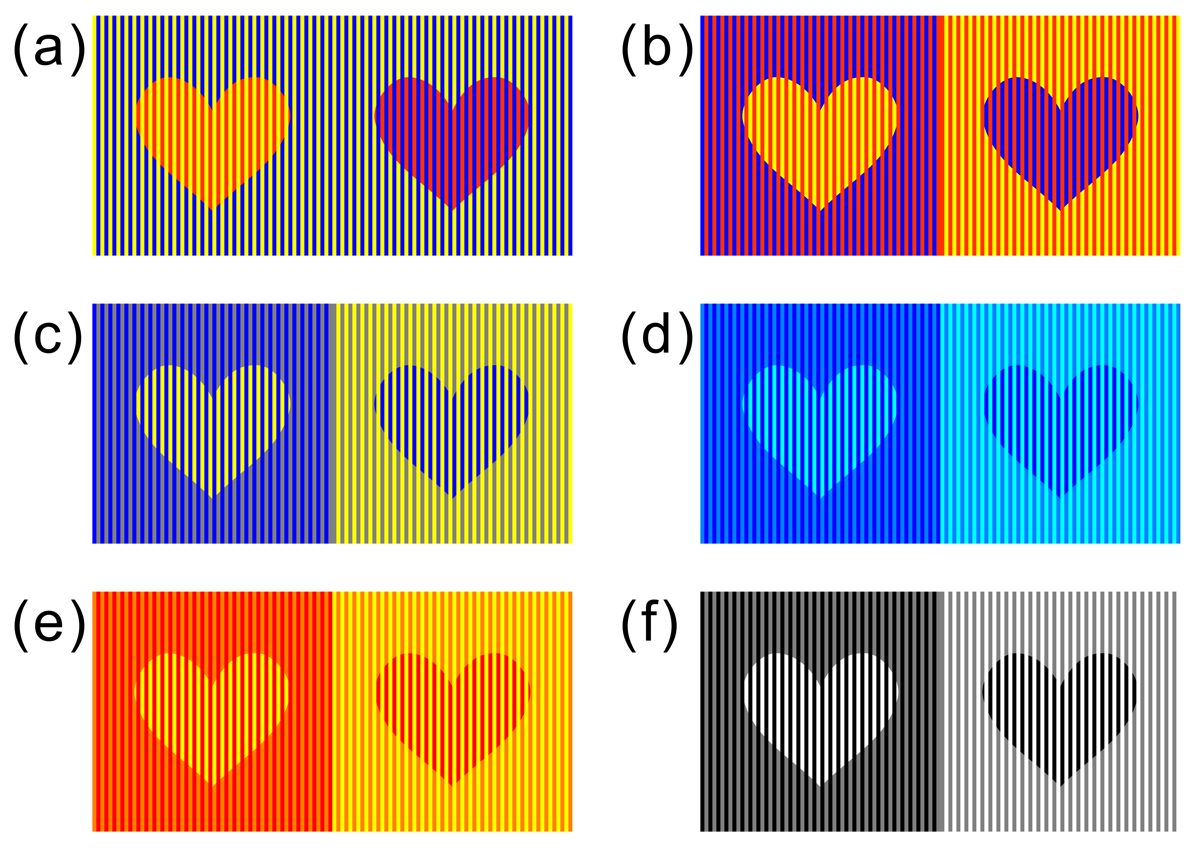
北岡明佳 (2012) 色の錯視いろいろ (6) 図地分離による錯視 日本色彩学会誌, 36(3), 237-238. PDF(スキャンコピー)
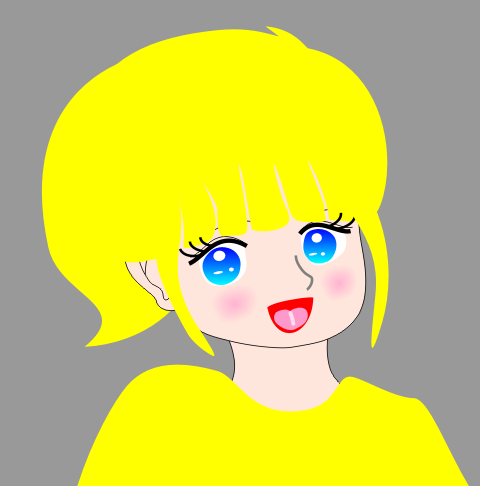
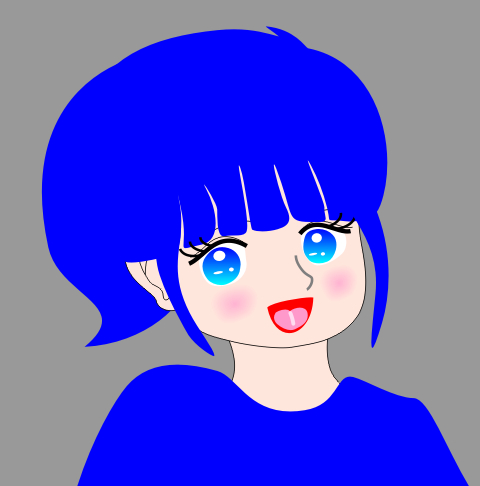
↓ 等間隔に黒線を乗せる ↓ 等間隔に白線を乗せる
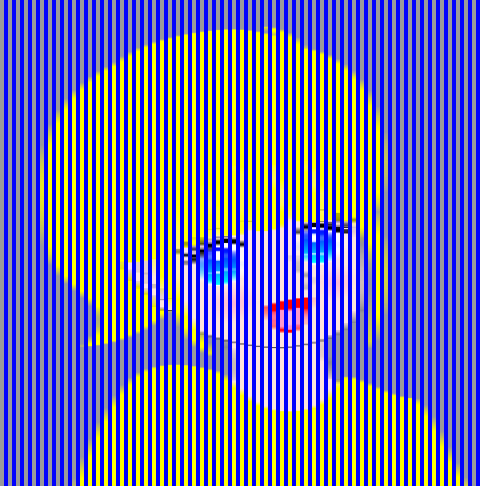
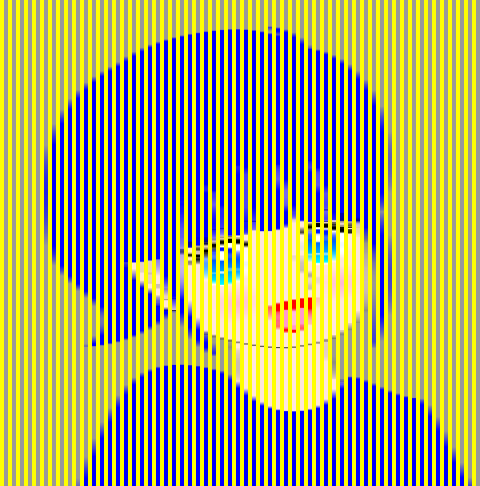
左右とも髪と服は黄と青の縞模様でできていて全く同じであるが、左は黄に見え、右は青に見える。
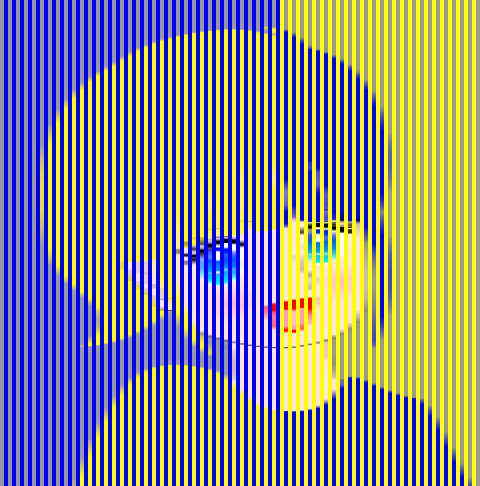
あしゅら男爵化
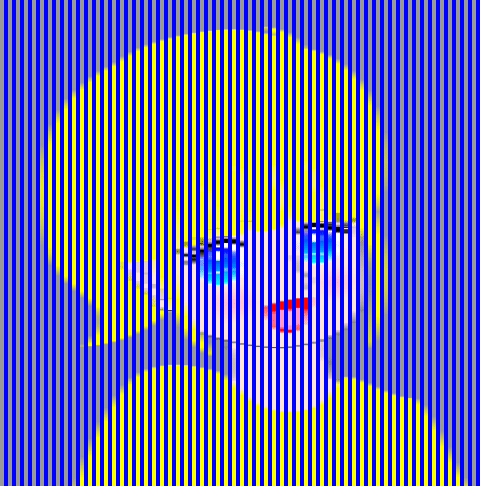
早変わり
(GIF アニメ)
アンダーソン錯視との関係


↓ グレースケールパターンで乗法的色変換 ↓ グレースケールパターンで加法的色変換
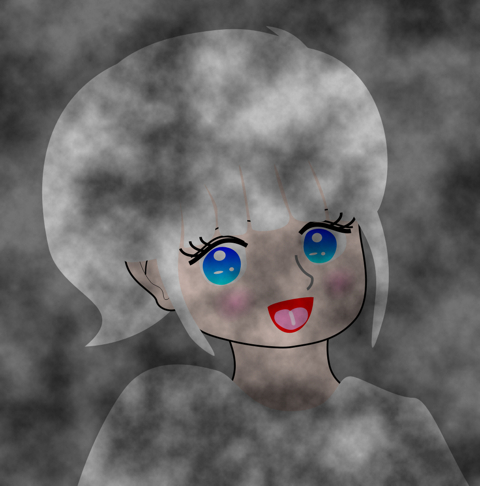
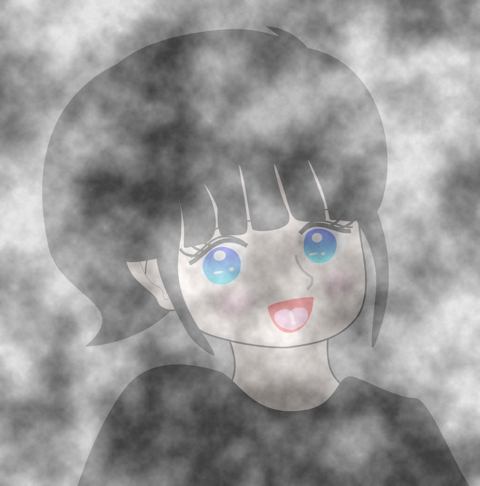
左右とも髪と服はグレースケールの雲模様でできていて全く同じであるが、左は白く見え、右は黒く見える。
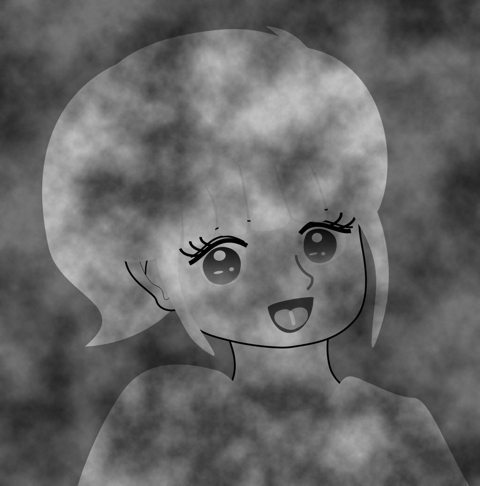
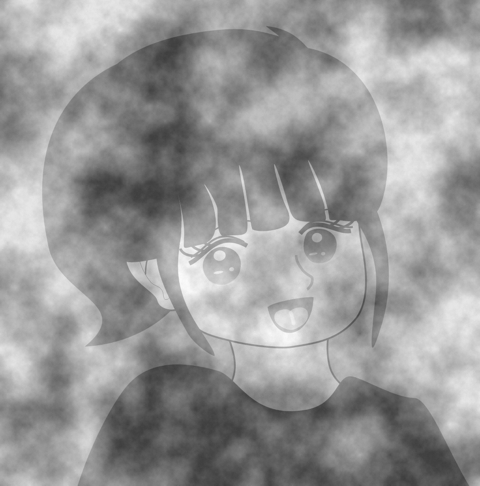
Anderson's illusion
Anderson, B. L. and Winawer, J. (2005) Image segmentation and lightness perception. Nature, 434, 79-83.
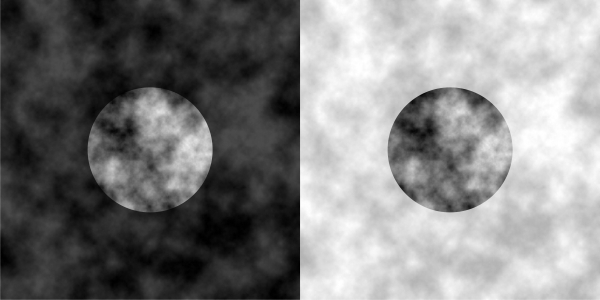
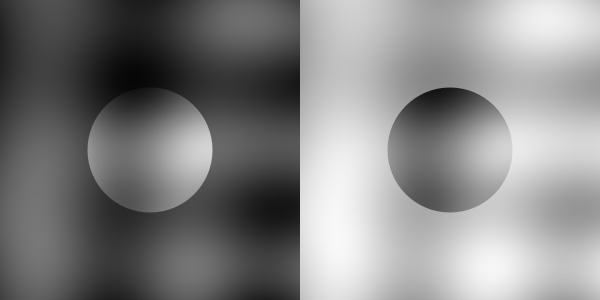
The inset surrounded by the darker background appears to be lighter than the same pattern surrounded by the brighter background.
See Bart's Homepage
(Lightness scission)
The chromatic Anderson's illusion is possible.
Wollschläger, D. and Anderson, B.L. (2009) The role of layered scene representations in color appearance. Current Biology, 19, 430-435.
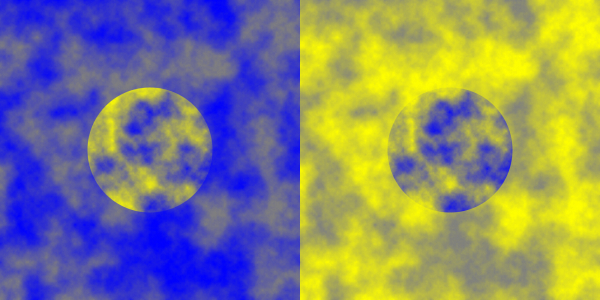
The inset surrounded by the bluish background appears to be yellowish while the inset surrounded by the yellowish background appears to be bluish.
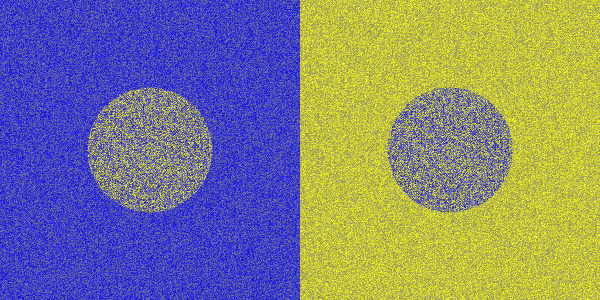
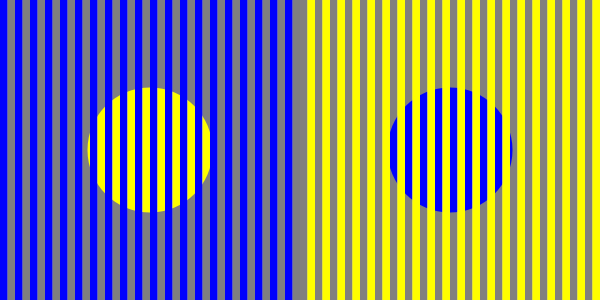
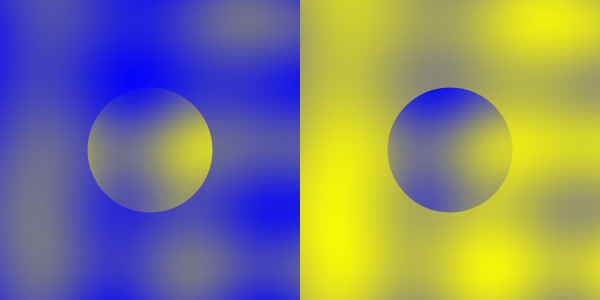
Chromatic Anderson's illusion does not depend on colour contrast, as shown
below.
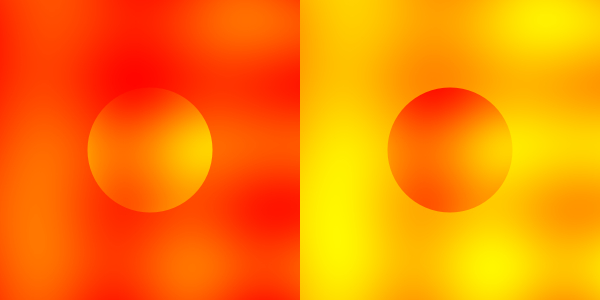
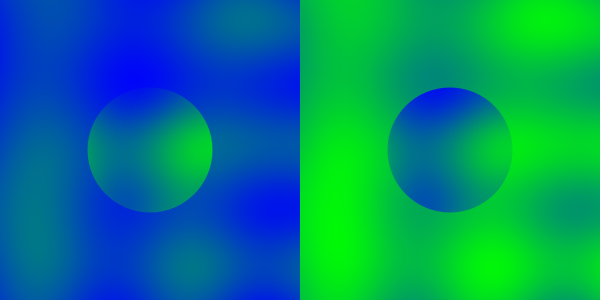
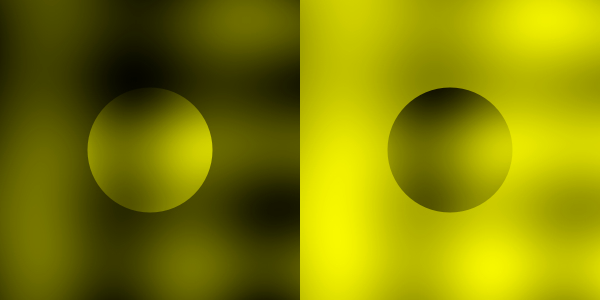
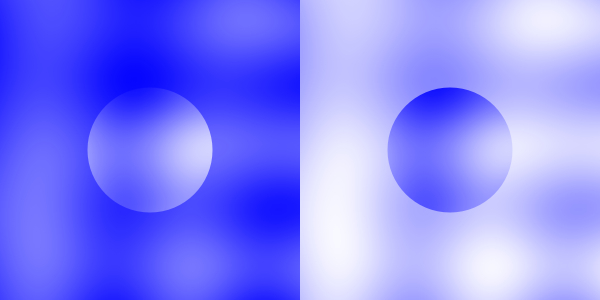
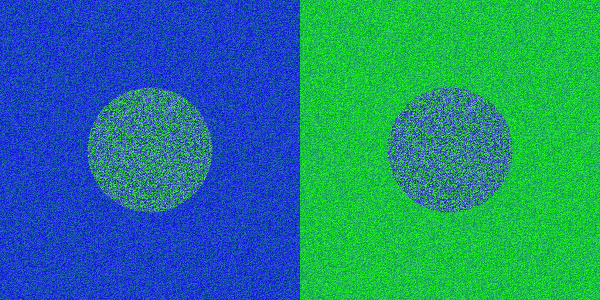
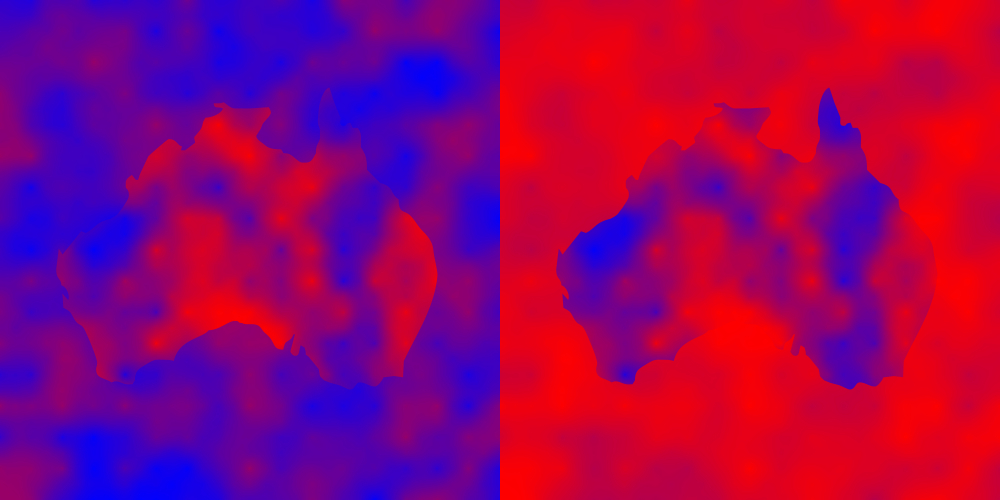
"Australia seen from space and dust storm over Australia"
The two Australia shapes are physically the same color and texture, but the left Australia appears to be reddish while the right one appears to be bluish with red dust storm blanketing it. This effect depends on the chromatic version of Anderson's illusion.
Copyright Akiyoshi .Kitaoka 2009 (September 25)
Anderson, B. L. and Winawer, J. (2005) Image segmentation and lightness perception. Nature, 434, 79-83.
Wollschläger, D. and Anderson, B.L. (2009) The role of layered scene representations in color appearance. Current Biology, 19, 430-435.
(Colour scission)
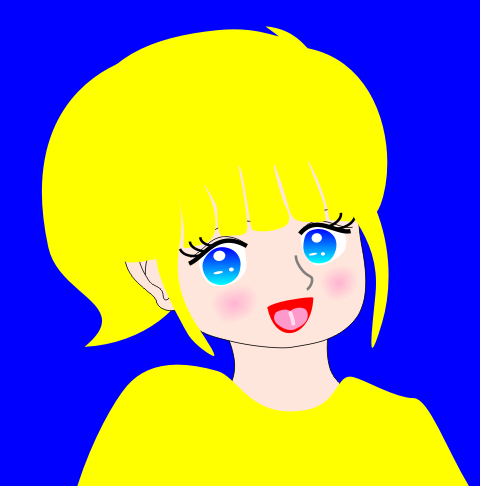
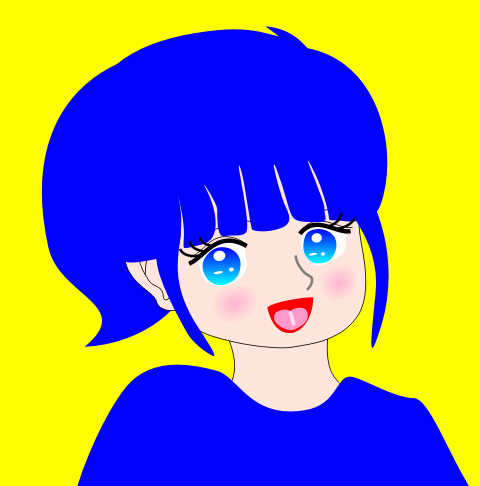
↓ ↓
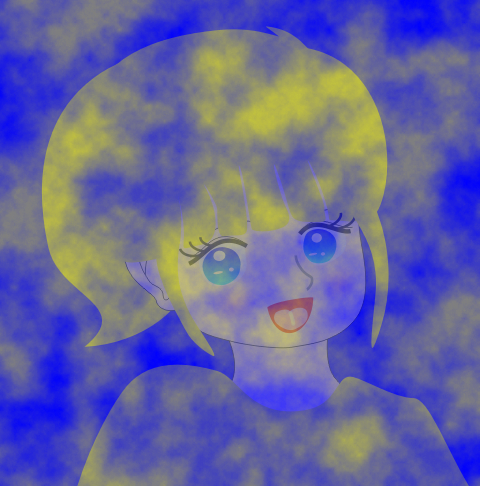
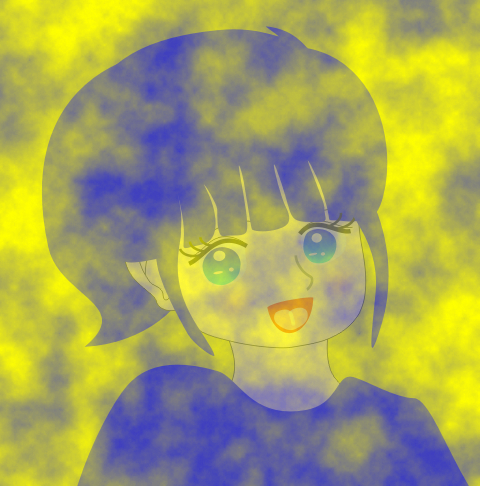
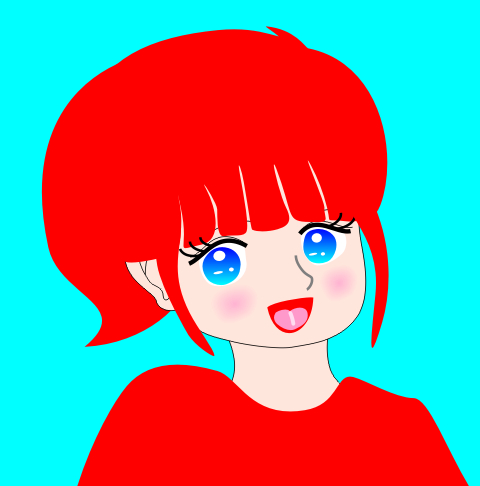
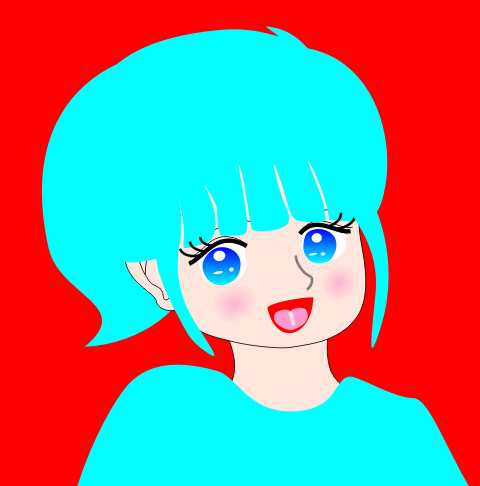
↓ ↓
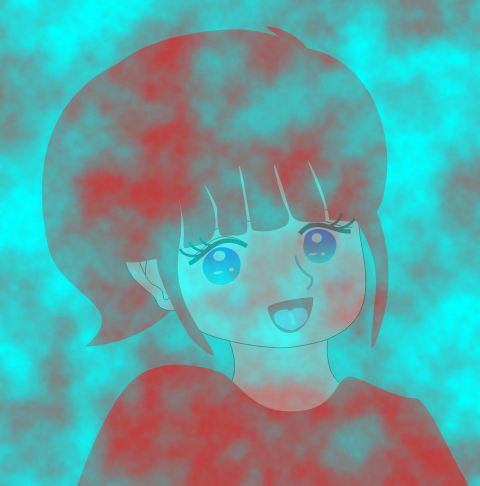
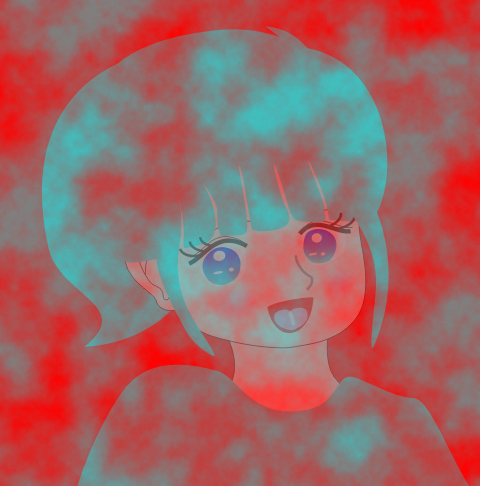
明るさの対比との関係
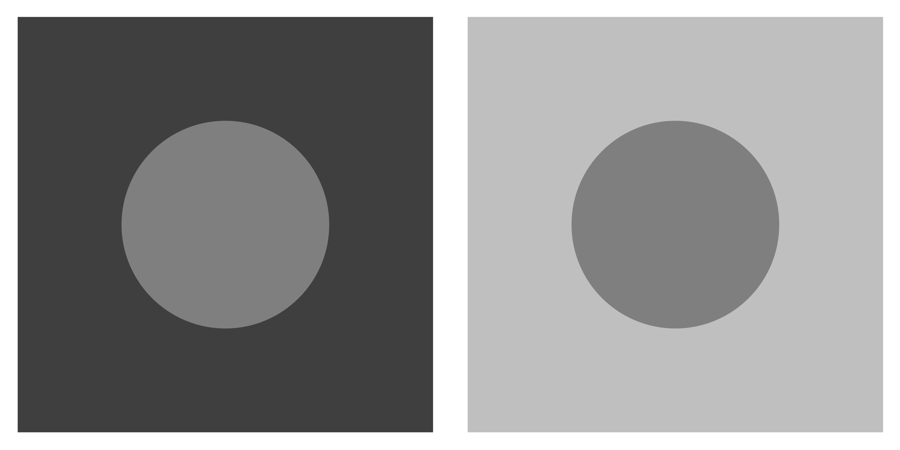
Spatial color mixture with three colors: additive color mixture (left)
and subtractive one (right)
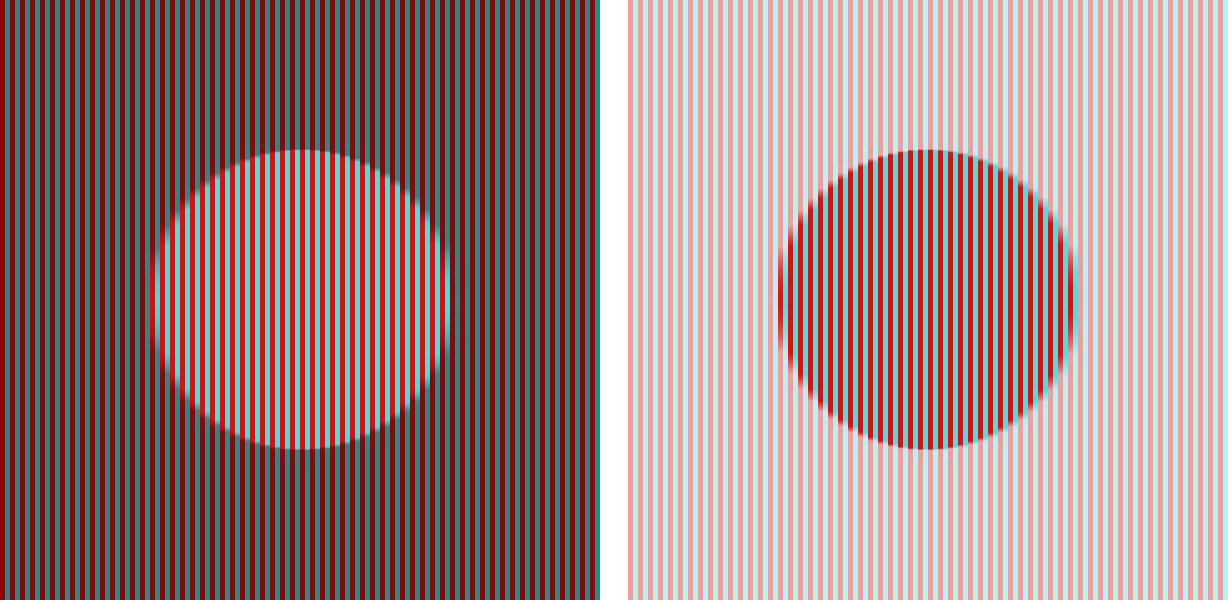
分節化による明るさの対比の増強との関係
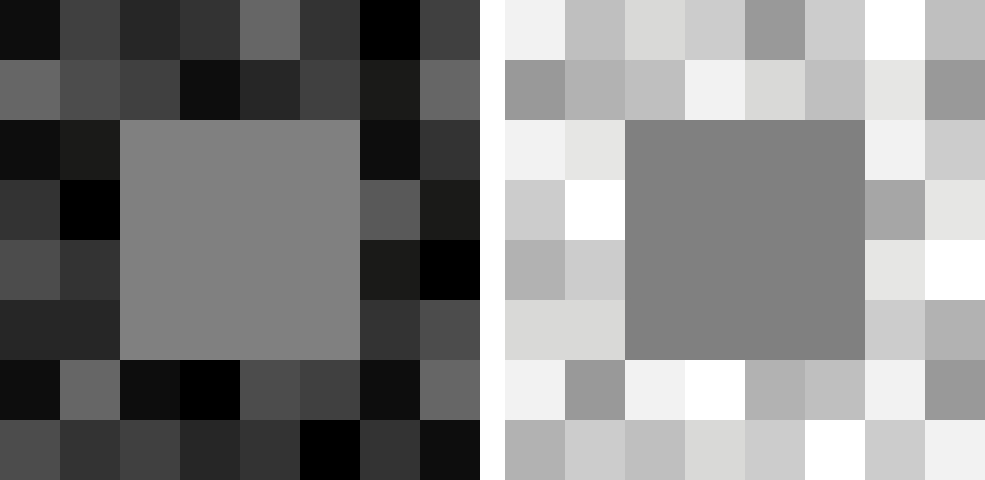
Gilchrist, A., Kossyfidis, C., Bonato, F., Agostini, T., Cataliotti, J., Li, X., Spehar, B., Annan, V., and Economou, E. (1999) An anchoring theory of lightness perception. Psychological Review, 106, 795-834.
Spatial color mixture with three colors: additive color mixture (left)
and subtractive one (right)
.jpg)
ホワイト効果との関係
オリジナル図
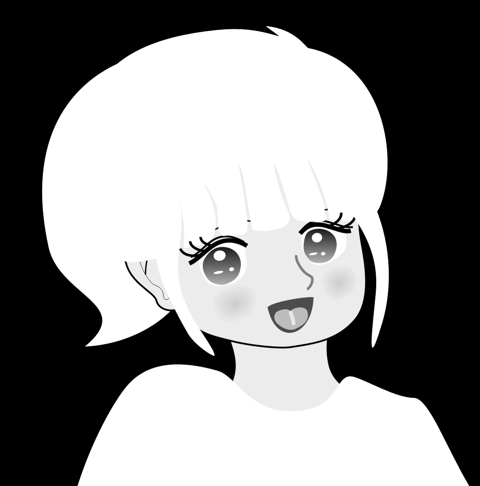
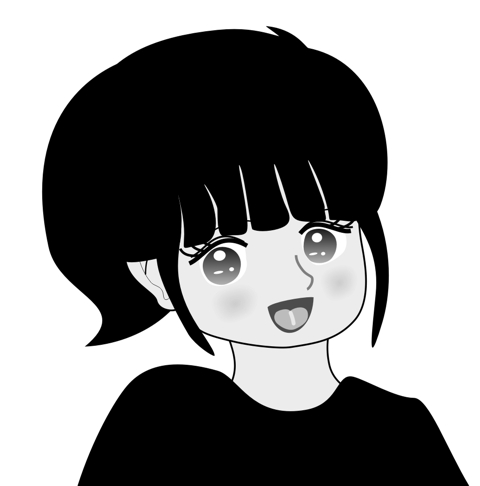
↓ 乗法的色変換(黒50%) ↓ 加法的色変換(白50%)
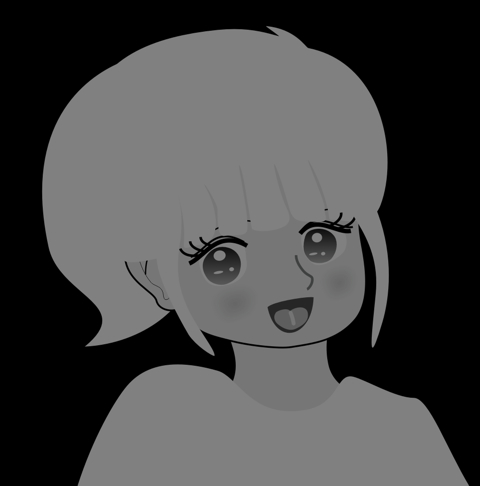
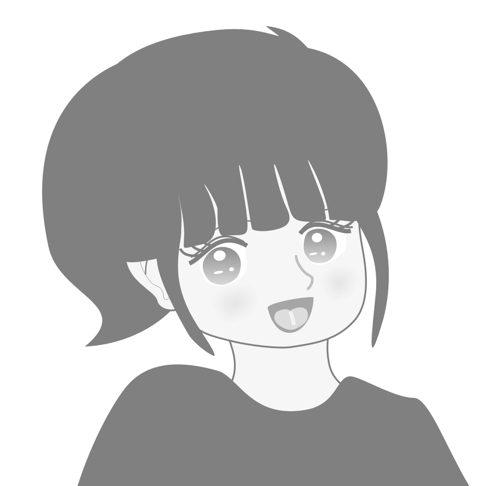
↓ 等間隔に白線を乗せる ↓ 等間隔に黒線を乗せる
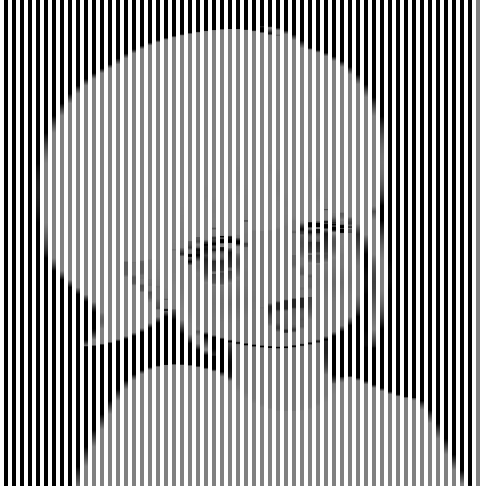
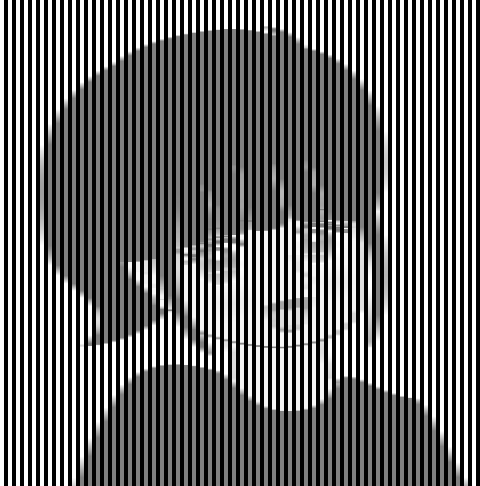

ホワイト効果(White's effect)・・・左右の灰色は同じであるが、左半分の方が明るく見える。
White, M. (1979) A new effect on perceived lightness. Perception, 8, 413-416.
逆ホワイト効果との関係
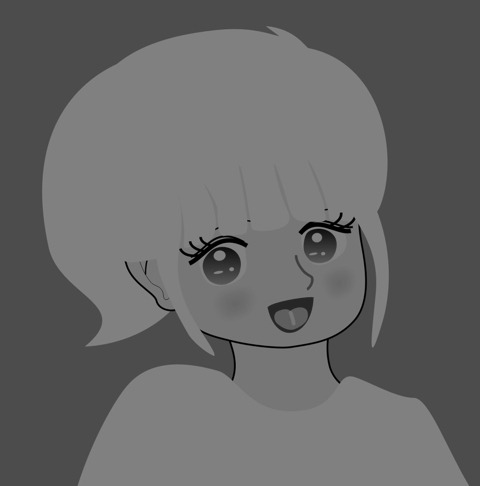
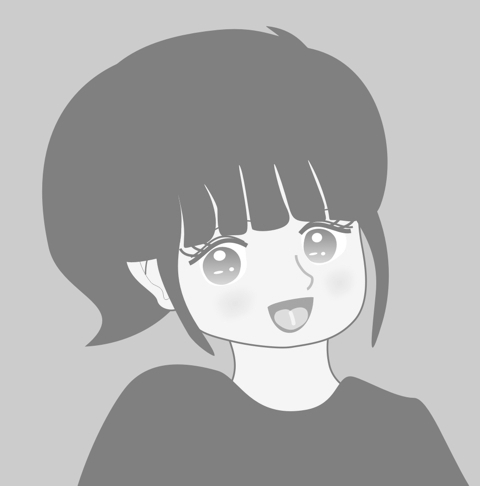
↓ 等間隔に黒線を乗せる ↓ 等間隔に白線を乗せる
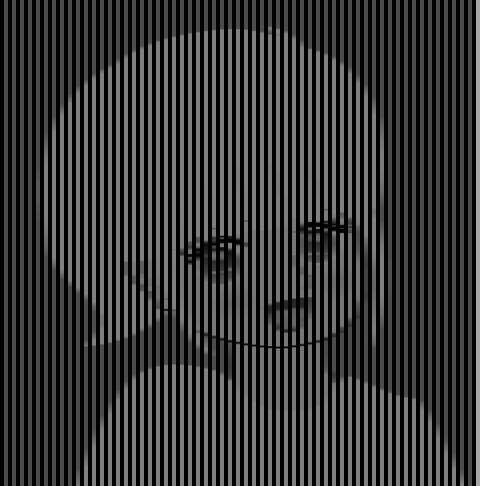
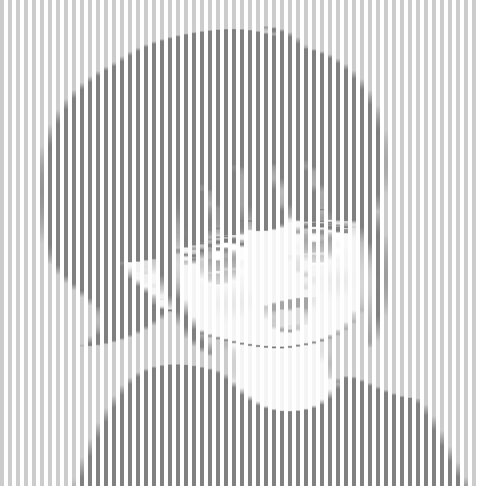
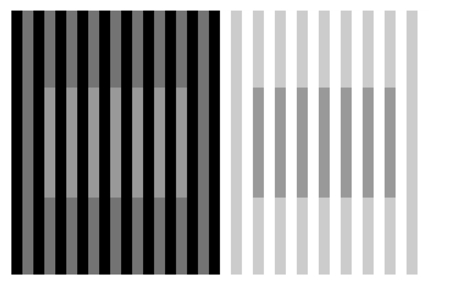
逆ホワイト効果(inverted White's effect)・・・・・・左右の灰色は同じであるが、左半分の方が明るく見える。
Ripamonti, C. and Gerbino, W. (2001) Classical and inverted White’s effects. Perception, 30, 467-488.
cf.

ホワイト効果(White's effect)・・・左右の灰色は同じであるが、左半分の方が明るく見える。
要するに
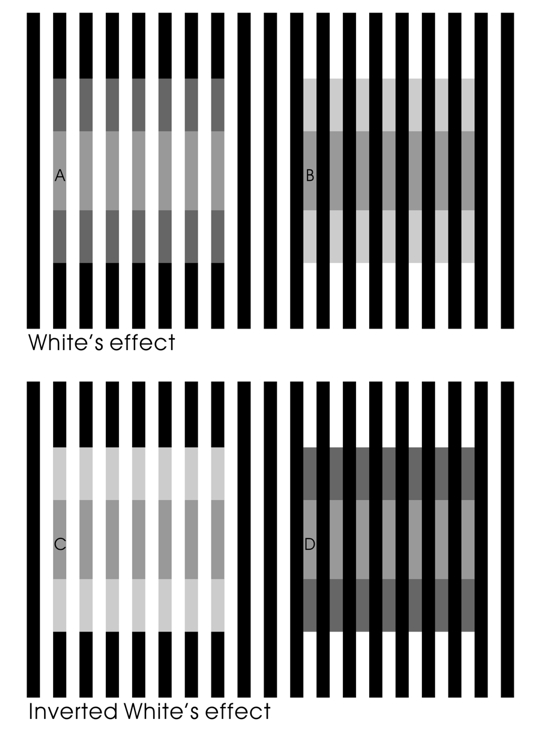
結論: ホワイト効果と逆ホワイト効果は「この」文脈で説明できる。
抄録アブストラクト: 並置混色は点描とカラーディスプレーの原理として知られている。点描はCMYを原色とする減法混色、ディスプレーはRGBを原色とする加法混色という違い がある。これらの混色による画像の知覚と、強力な明るさの錯視として知られるホワイト効果との関係を考察する。ホワイト効果および逆ホワイト効果は並置混 色のメカニズムから説明できるという仮説を提唱する。
ネオン明るさ効果との関係
オリジナル図


↓ 等間隔に黒のオクルーダーを乗せる ↓ 等間隔に白のオクルーダーを乗せる
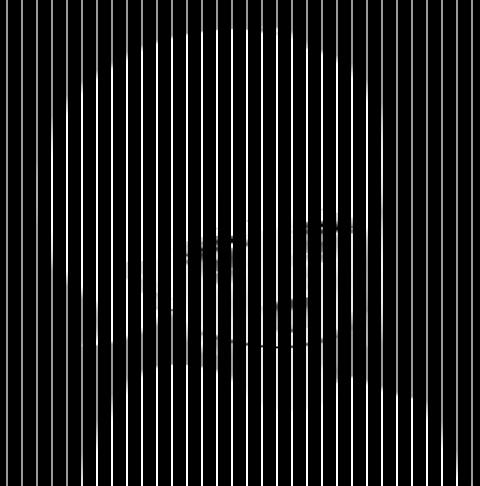
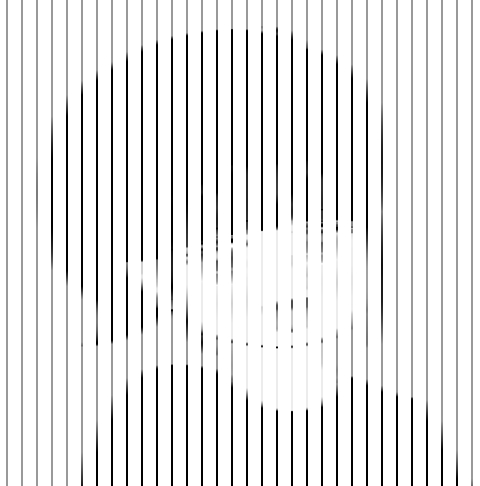
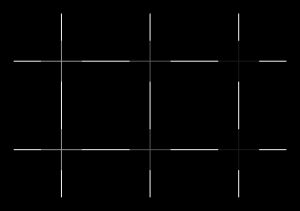
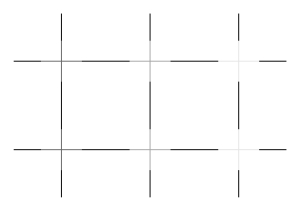
ネオン明るさ拡散
ネオン色拡散との関係
オリジナル図
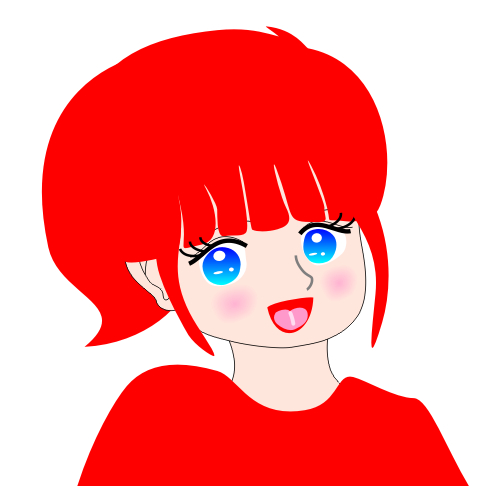
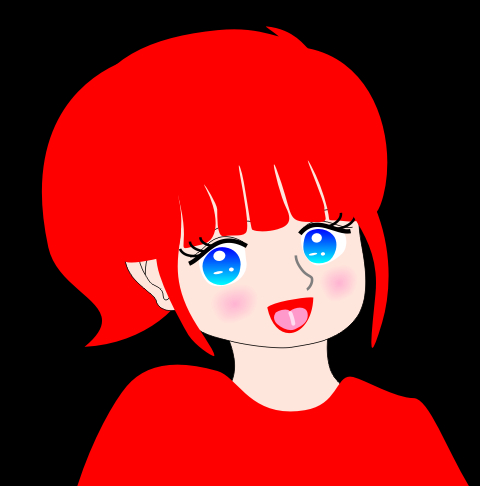
↓ 等間隔に黒のオクルーダーを乗せる ↓ 等間隔に白のオクルーダーを乗せる
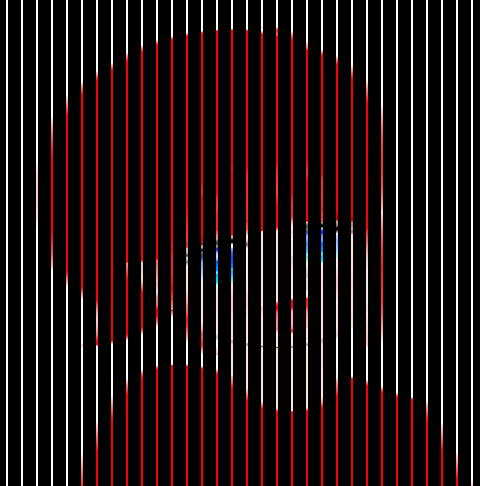
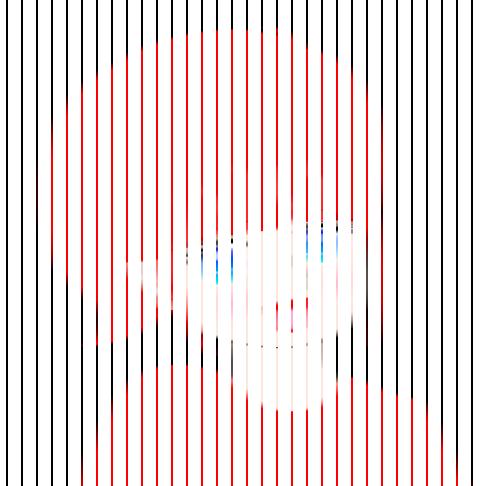
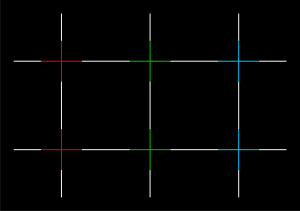
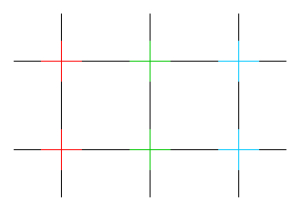
ネオン色拡散
ムンカー錯視類
Munker illusion: the left heart appears to be red-purple whereas the right one orange, though they are the same red.
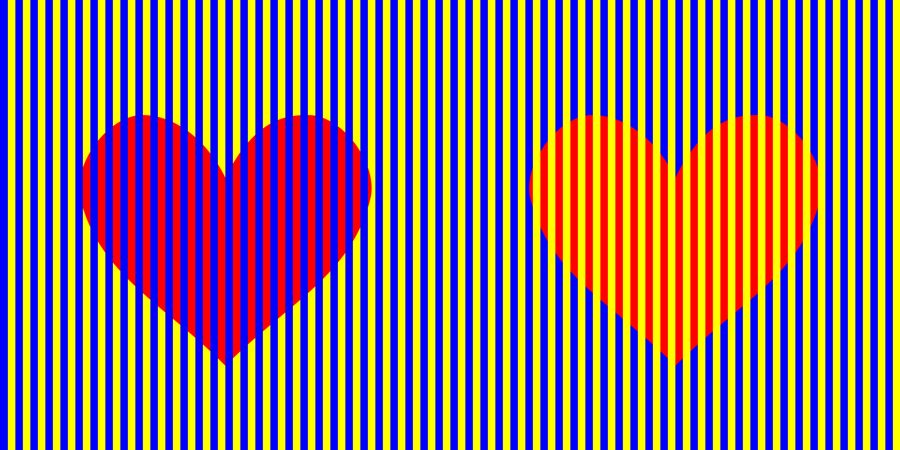
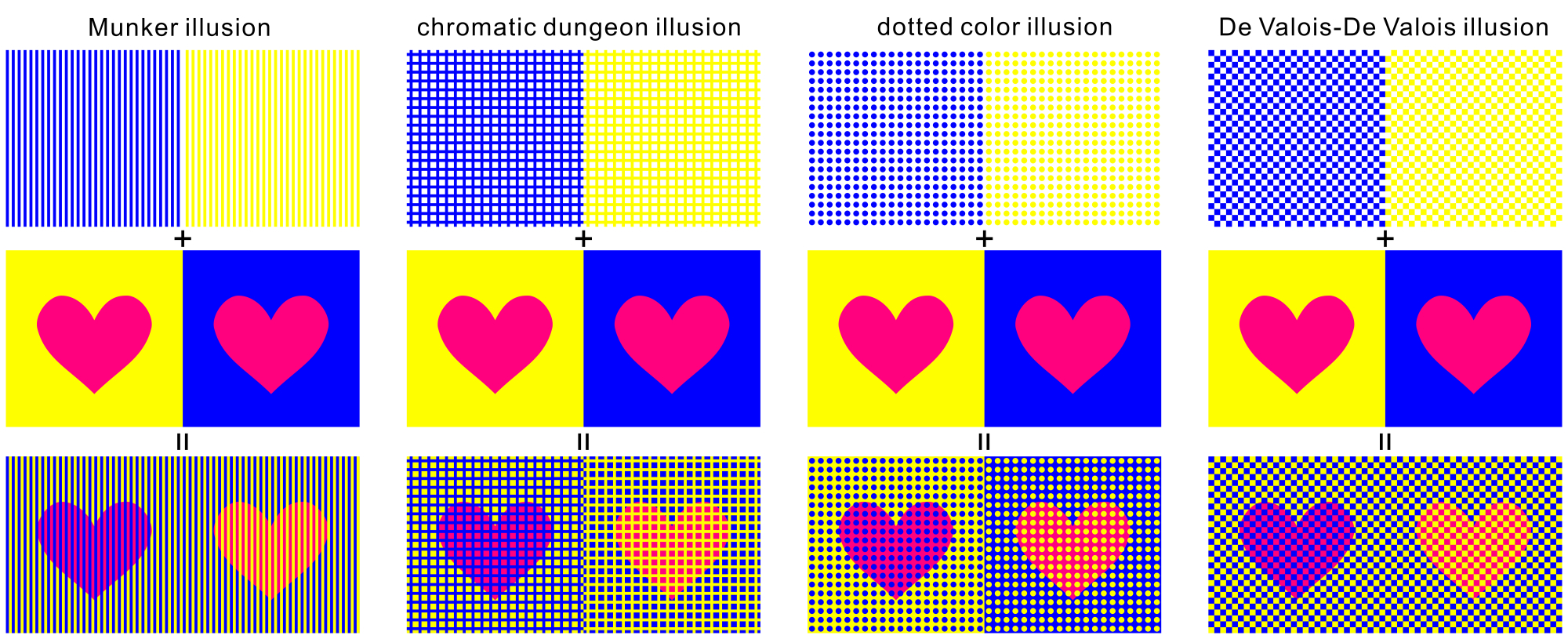
「4種類の色の錯視の作り方」
物理的に同じ色(R=255, G=0, B=127)のハートが錯視によってピンクとオレンジのハートに見える。左から、ムンカー錯視(Munker illusion)、色の土牢錯視(chromatic dungeon illusion)、ドット色錯視(dotted color illusion)、デヴァロイス・デヴァロイス錯視(De Valois-De Valois illusion)である。 上図の高解像度ファイルはこちら(8000 x 3262 pixel, 10MB)。
Copyright Akiyoshi Kitaoka 2009 (June 1)
References
| Munker illusion | Munker, H. (1970) Farbige Gitter, Abbildung auf der Netzhaut und übertragungstheoretische Beschreibung der Farbwahrnehmung. Habilitationsschrift, Ludwig-Maximilians-Universität, München. |
| chromatic dungeon illusion | For the dungeon illusion: Bressan, P. (2001) Explaining lightness illusions.
Perception, 30, 1031-1046. Kitaoka (2007) http://www.psy.ritsumei.ac.jp/~akitaoka/saishin22e.html |
| dotted color illusion | For the dotted brightness illusion: White, M. (1982) The assimilation-enhancing effect of a dotted surround upon a dotted test region. Perception, 11, 103-106. Kitaoka (2008) http://www.psy.ritsumei.ac.jp/~akitaoka/color10e.html |
| De Valois-De Valois illusion | De Valois, R. L. and De Valois, K. K. (1988) Spatial Vision. New York: Oxford University Press. |
北岡明佳 (2012) 色の錯視いろいろ (4) 簡単で錯視量の多い色相の錯視図形の作り方 日本色彩学会誌, 36(1), 45-46. PDF(スキャンコピー) <配布資料>
ムンカー錯視との関係
オリジナル図
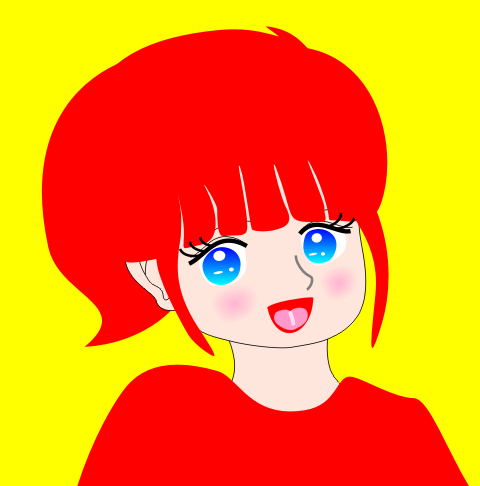
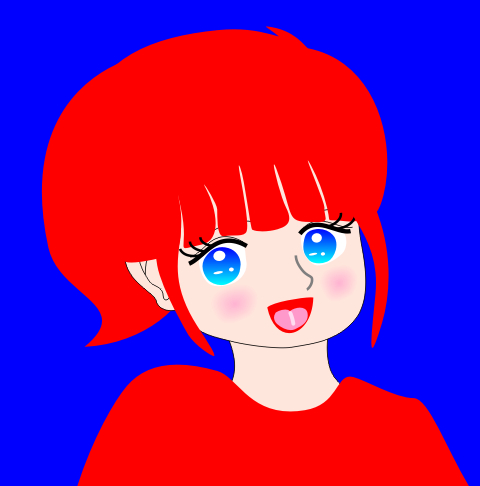
↓ 等間隔に青線を乗せる ↓ 等間隔に黄線を乗せる
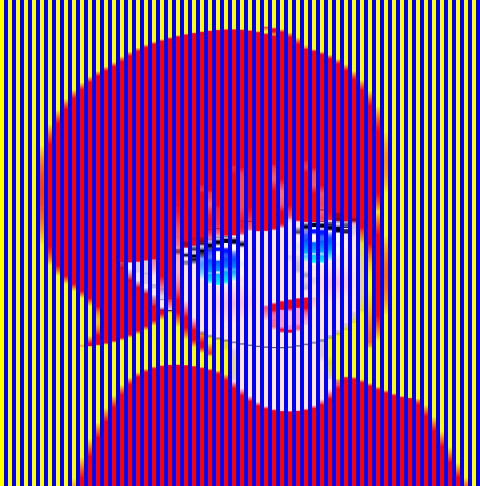
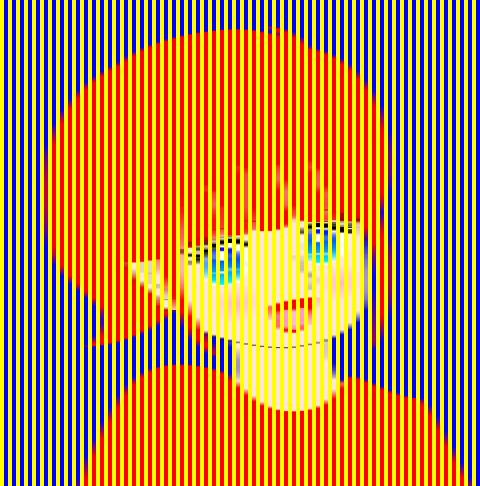
Supposed continuity of spatial color mixture and the Munker illusion. Black hearts appear to be red or cyan in the additive color mixture image (leftmost panel), while white hearts appear so in the subtractive color mixture image (rightmost panel). Moreover, gray hearts appear to be reddish or like cyan in the Munker illusion image (middle panel).

Red and cyan hearts with the additive color mixture
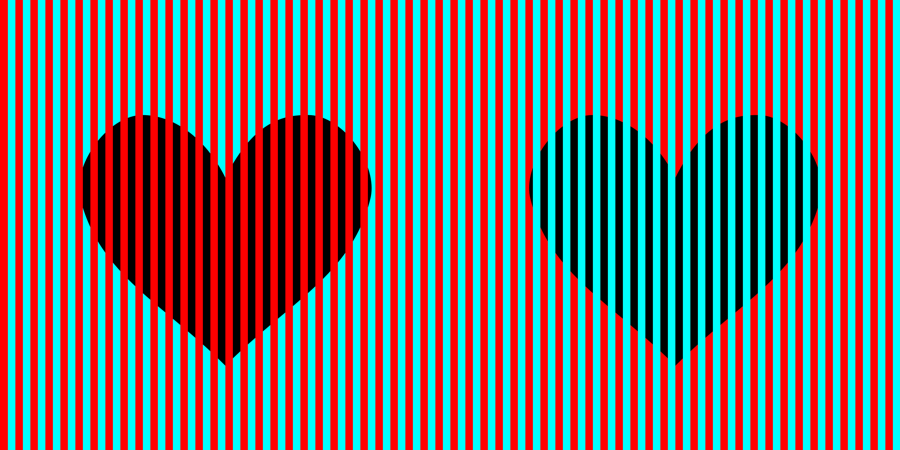
s.jpg)
Red and cyan hearts with the subtractive color mixture
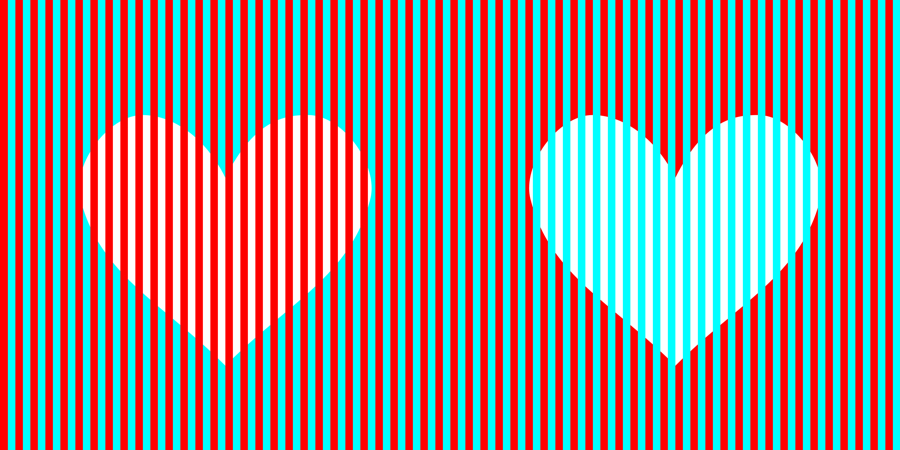
s.jpg)
Red and cyan hearts with the Munker illusion
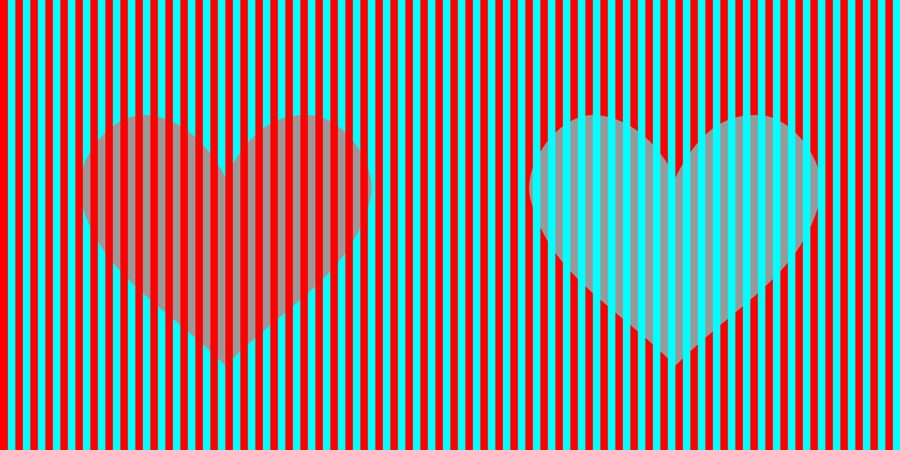
Munker illusion with three inducing colors: RGB (top) and CMY (bottom). In each, the left heart appears to be red-purple whereas the right one orange, though they are the same red.
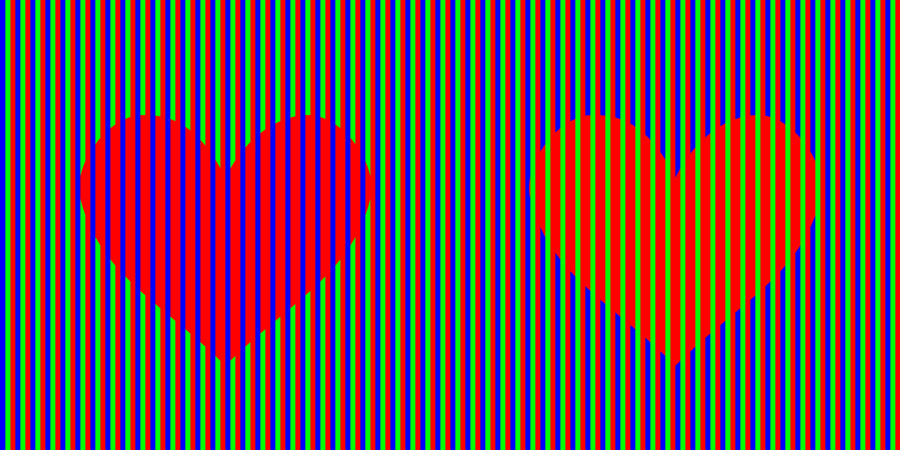
"Munker illusion with RGB"
The left heart appears to be red-purple while the right one to be orange, though they are the same red.
Copyright Akiyoshi Kitaoka 2015 (August 6)
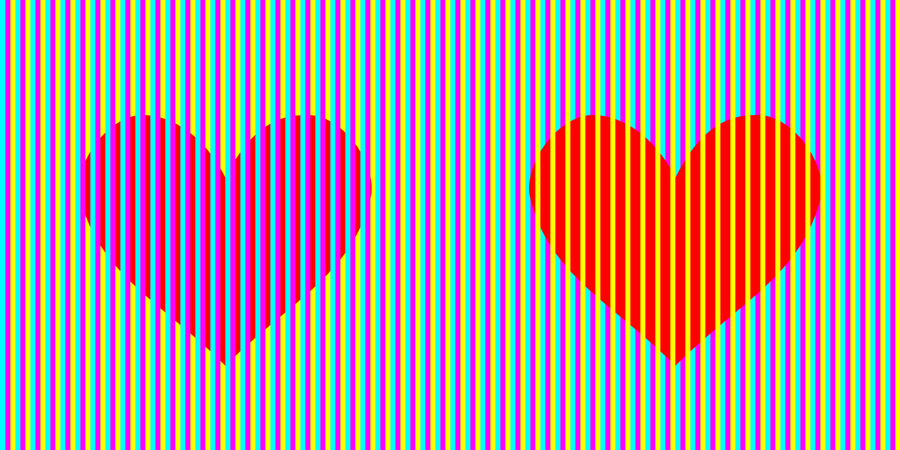
"Munker illusion with CMY"
The left heart appears to be red-purple while the right one to be orange, though they are the same red.
Copyright Akiyoshi Kitaoka 2015 (August 6)
cf.

Munker illusion: standard
The left heart appears to be red-purple while the right one to be orange, though they are the same red.
Copyright Akiyoshi Kitaoka 2015 (June 2)
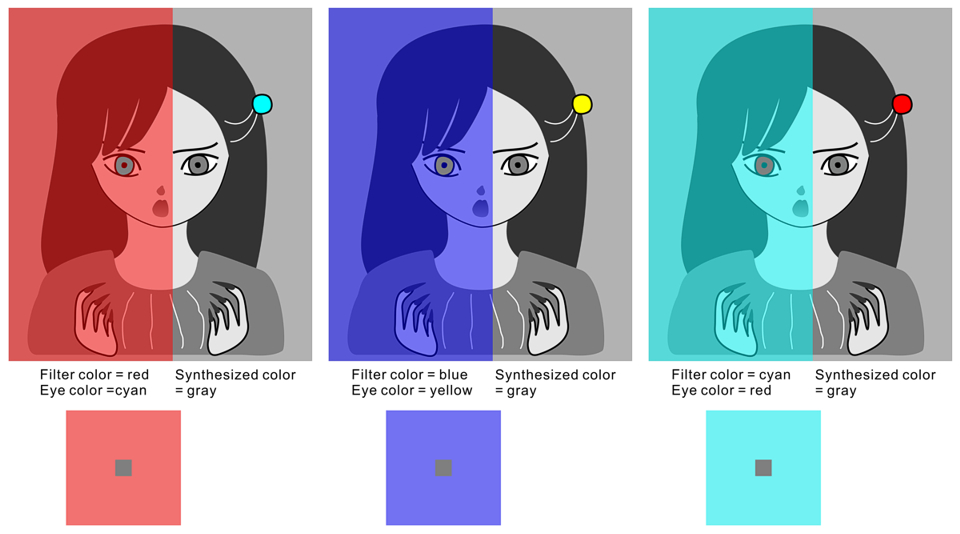
The right eye appears to be cyan in the left panel, yellow in the middle panel, and red in the right panel, though in each panel the right eye is the same color (= gray) as the left eye.
---
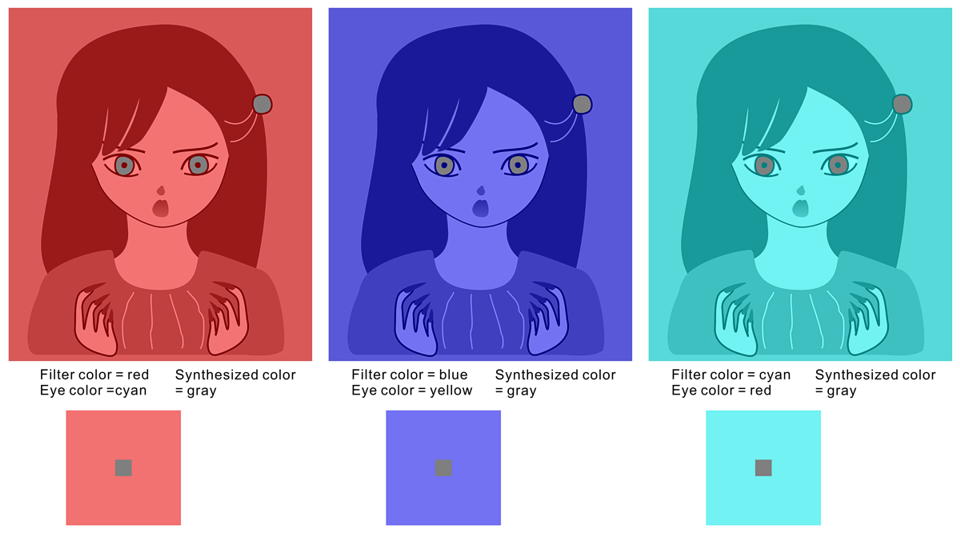
Copyright Akiyoshi Kitaoka 2015 (Septemner 2)
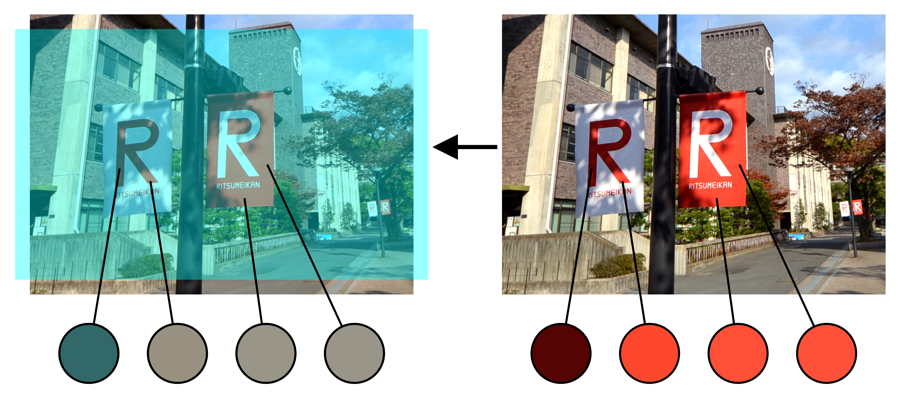
「立命館大学ののぼりの色の恒常性」
"Ritsumeikan flags"
Copyright Akiyoshi Kitaoka 2012 (November 30)
色の恒常性錯視デモ用のプリント用ファイル DOC
Both “multiplicative” and “additive” color changes make the color constancy illusion.
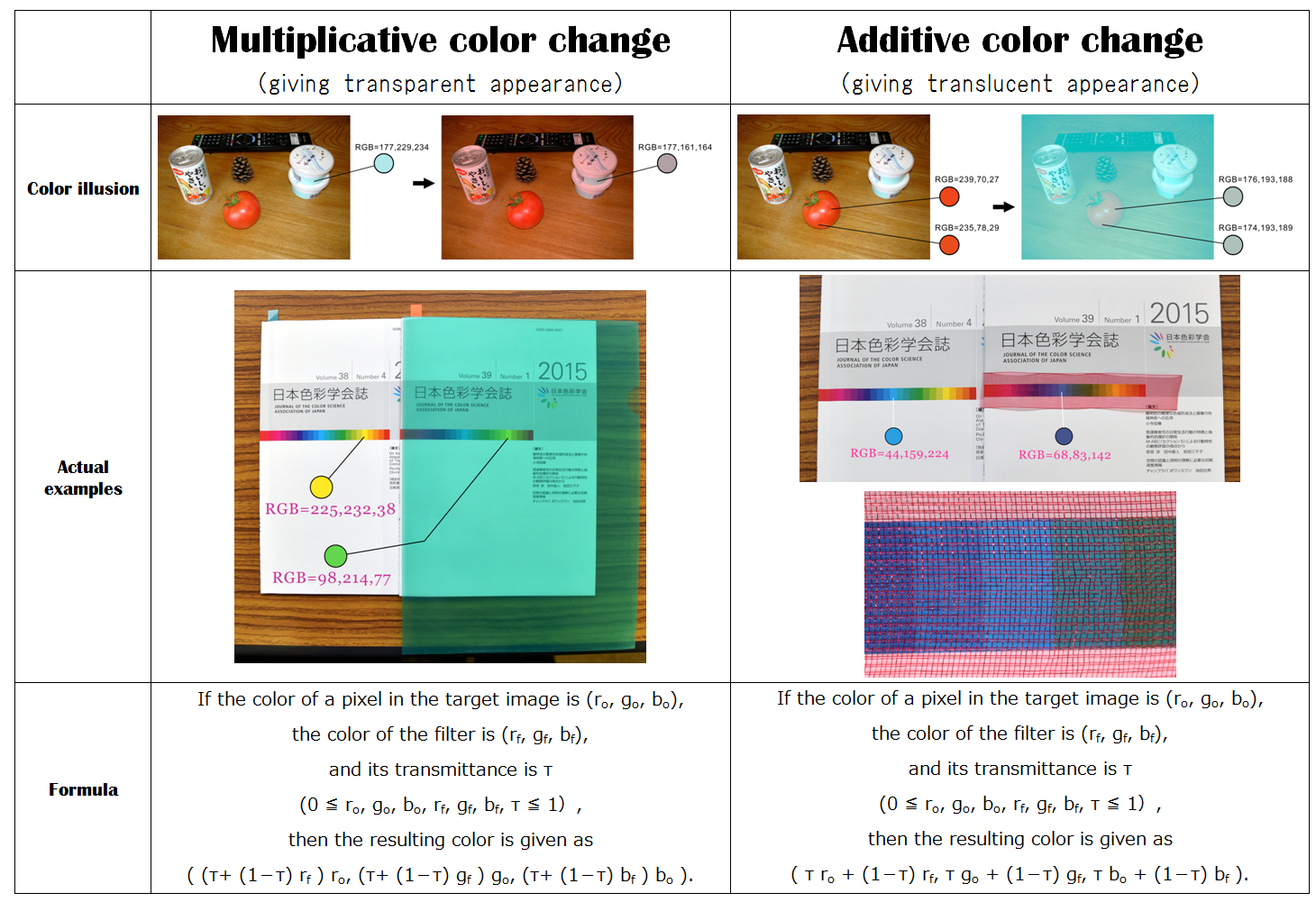
Kitaoka, A. (2011). A variety of color illusion: (2) Color constancy and two types of color filters. Journal of Color Science Association of Japan, 35(3), 234-236 (in Japanese).
まずは乗法的色変換
オリジナルの写真 (2015年5月3日@須磨離宮公園)
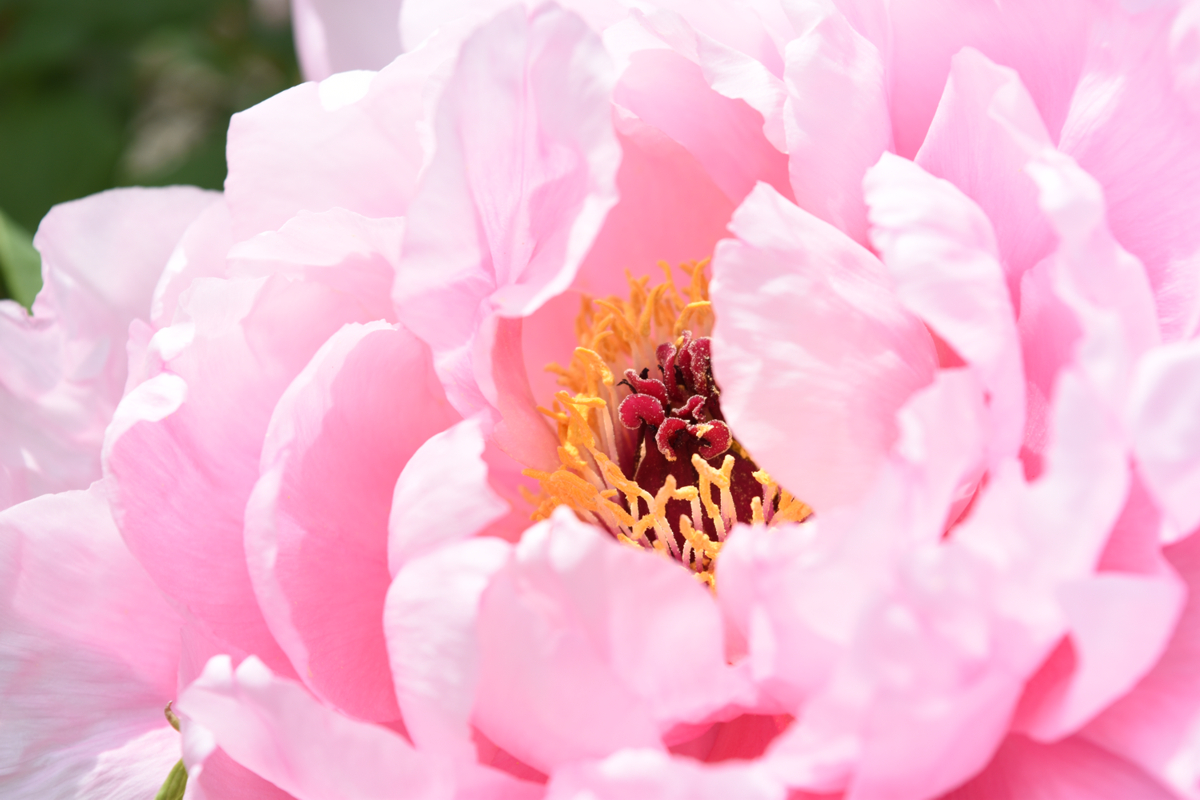
透明度50%で変換した画像 (各ピクセルのRGB値はオリジナルの50%の値)
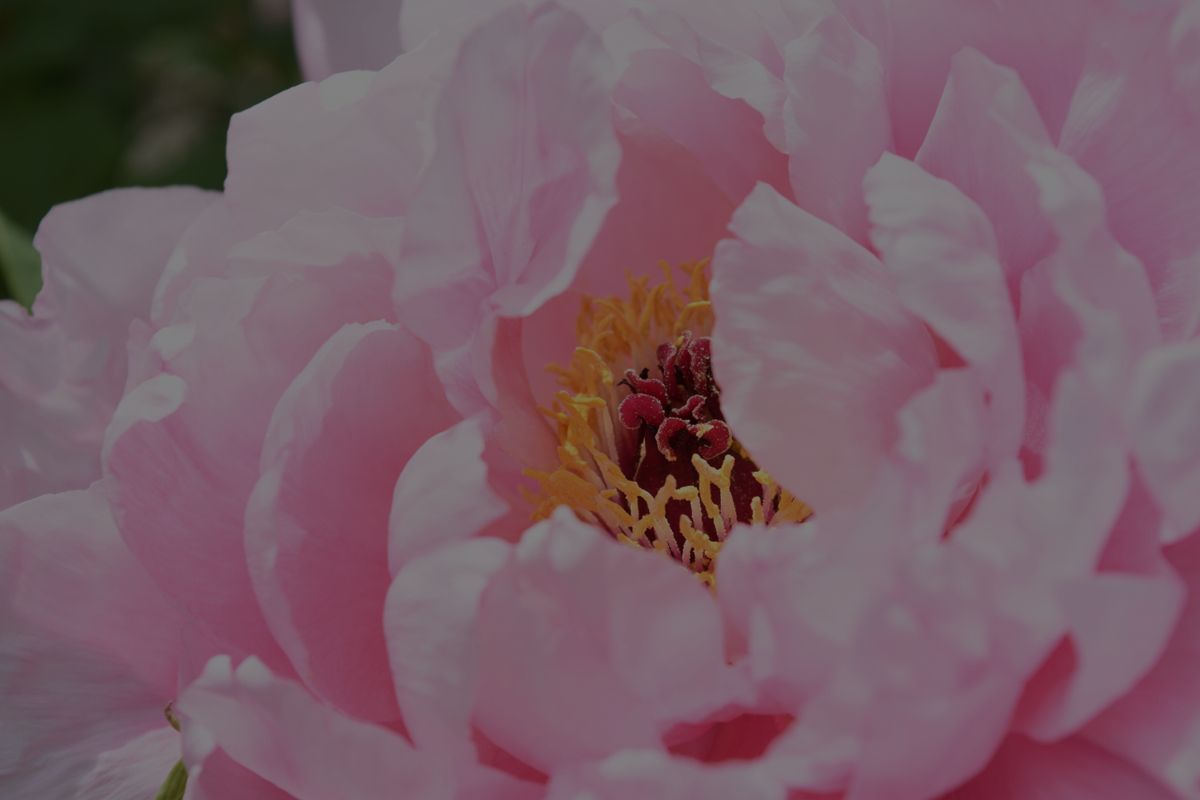
(MA_color_change04.exe を使用。ただし、bmpファイル専用。jpegファイル用はこちら → MA_color_change04jpeg.exe)
sRGB値を用いて透明度50%で変換した画像 (各ピクセルのsRGB値はオリジナルの50%の値、すなわちsRGB準拠のティスプレーでは輝度50%の値)
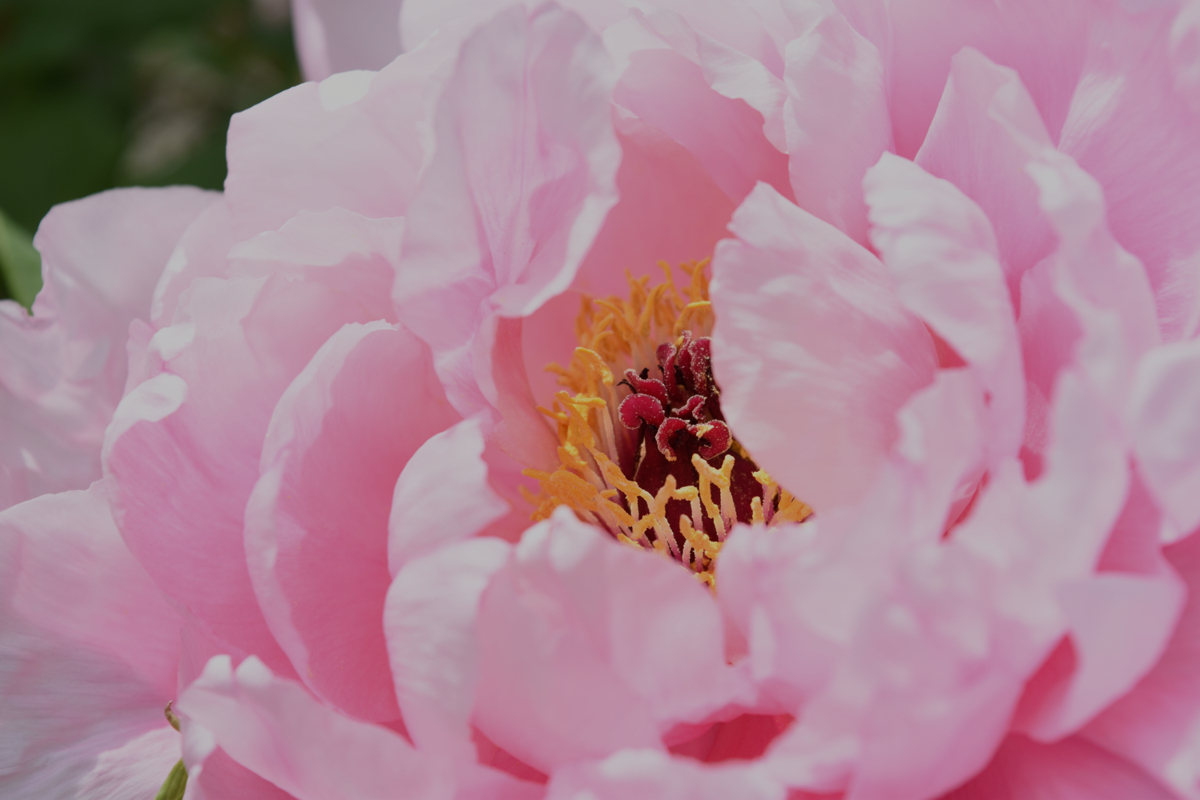
RGB値で透明度25%で変換した画像
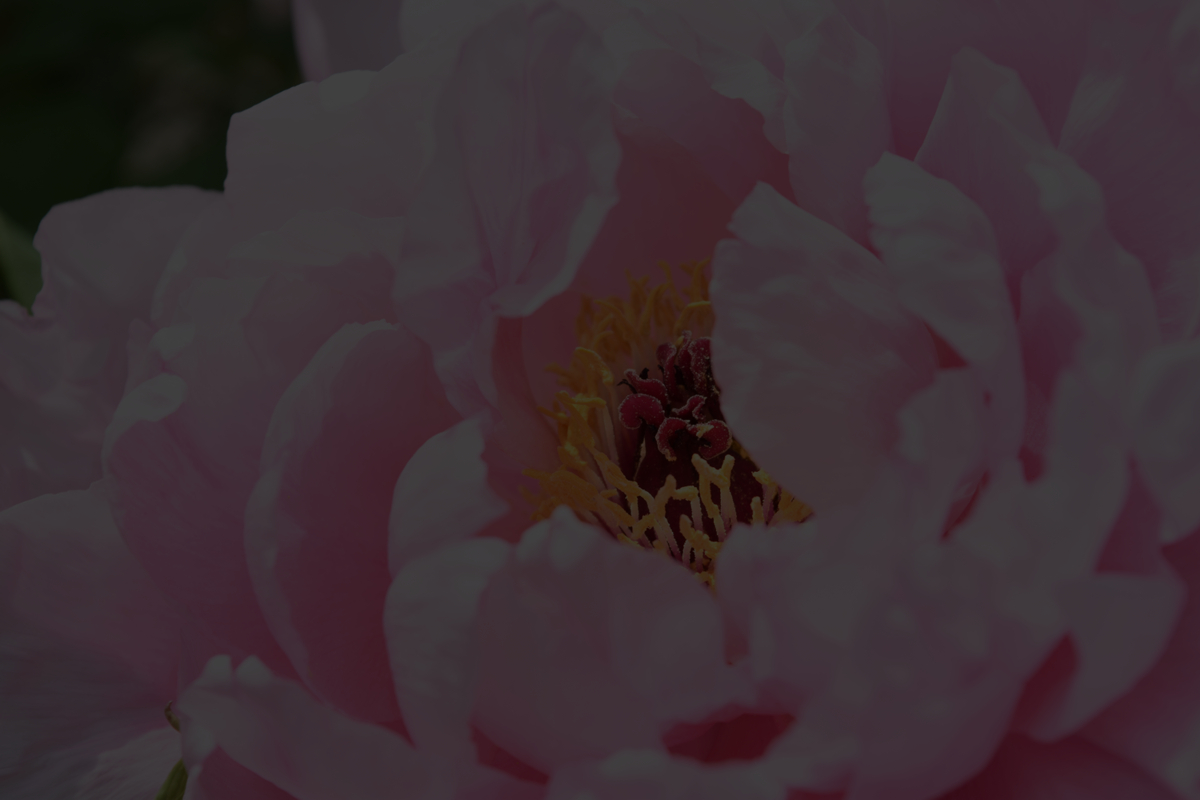
上の 「RGB値で透明度25%で変換した画像」 を乗法的色変換の逆変換プログラムにかけて復元した画像
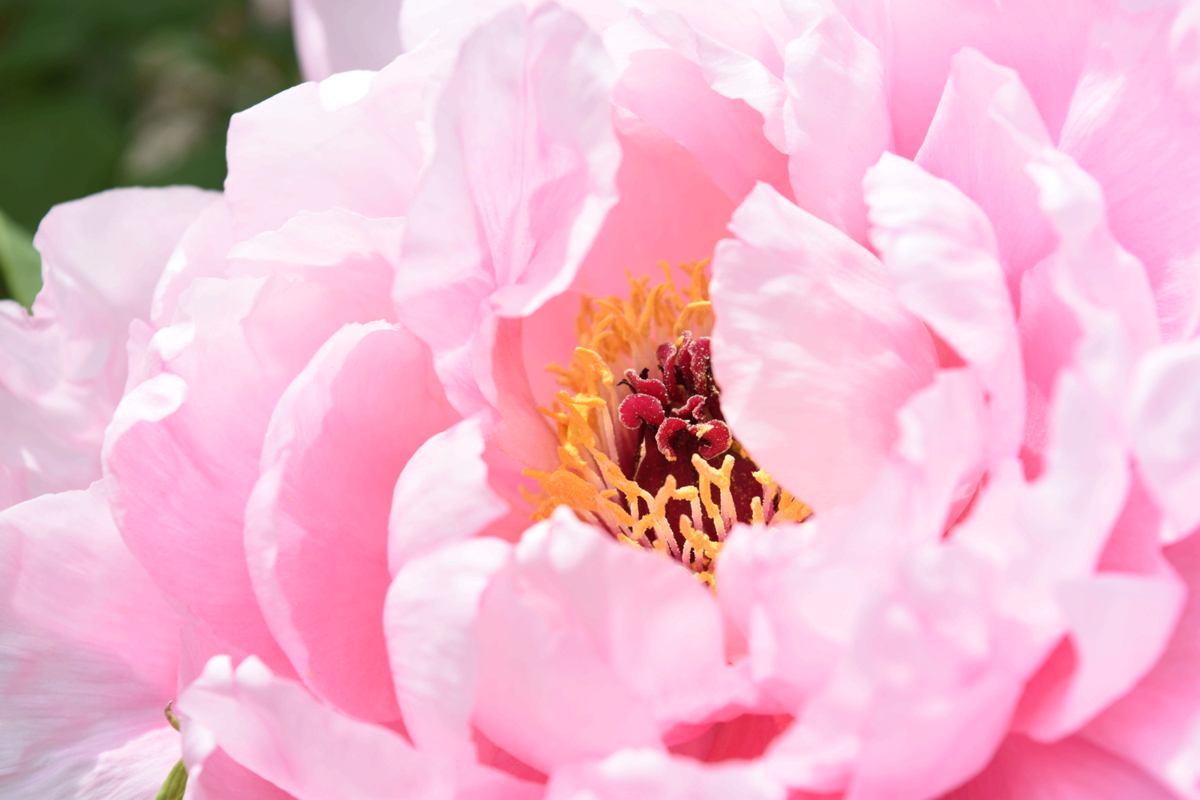
(AM_color_inverse03.exe を使用。ただし、bmpファイル専用。jpegファイル用はこちら → AM_color_inverse03jpeg.exe)
Bだけ透明度0%で、RとGは透明度100%で変換した画像。黄色のフィルターをかけたのと同じ。
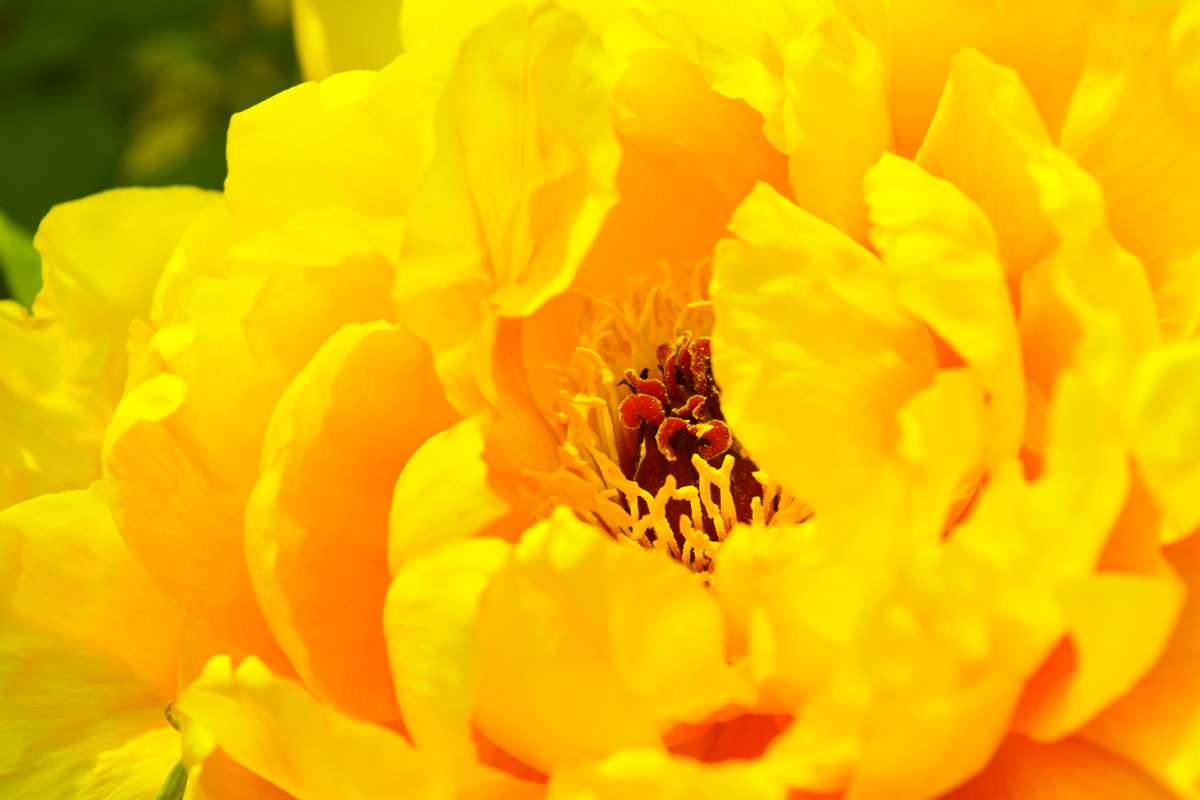
Rだけ透明度0%で、GとBは透明度100%で変換した画像。シアン色のフィルターをかけたのと同じ。
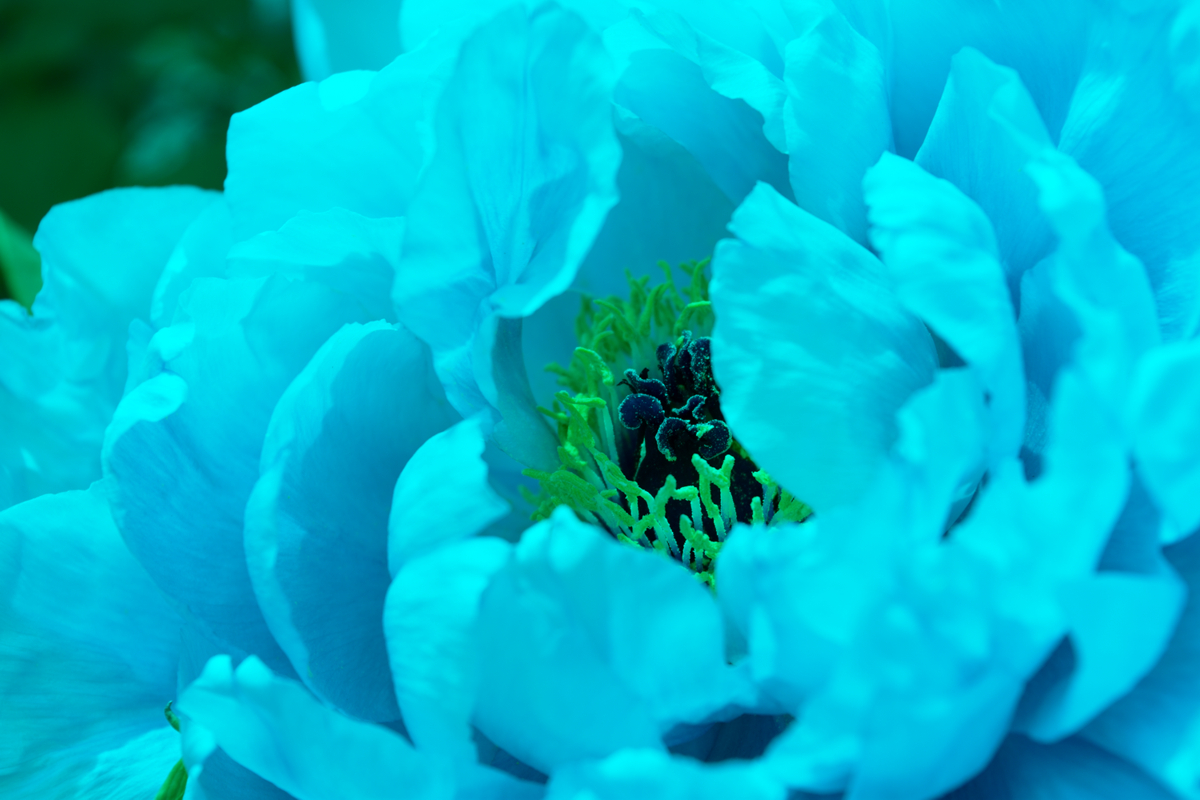
Gだけ透明度0%で、RとBは透明度100%で変換した画像。マゼンタ色のフィルターをかけたのと同じ。
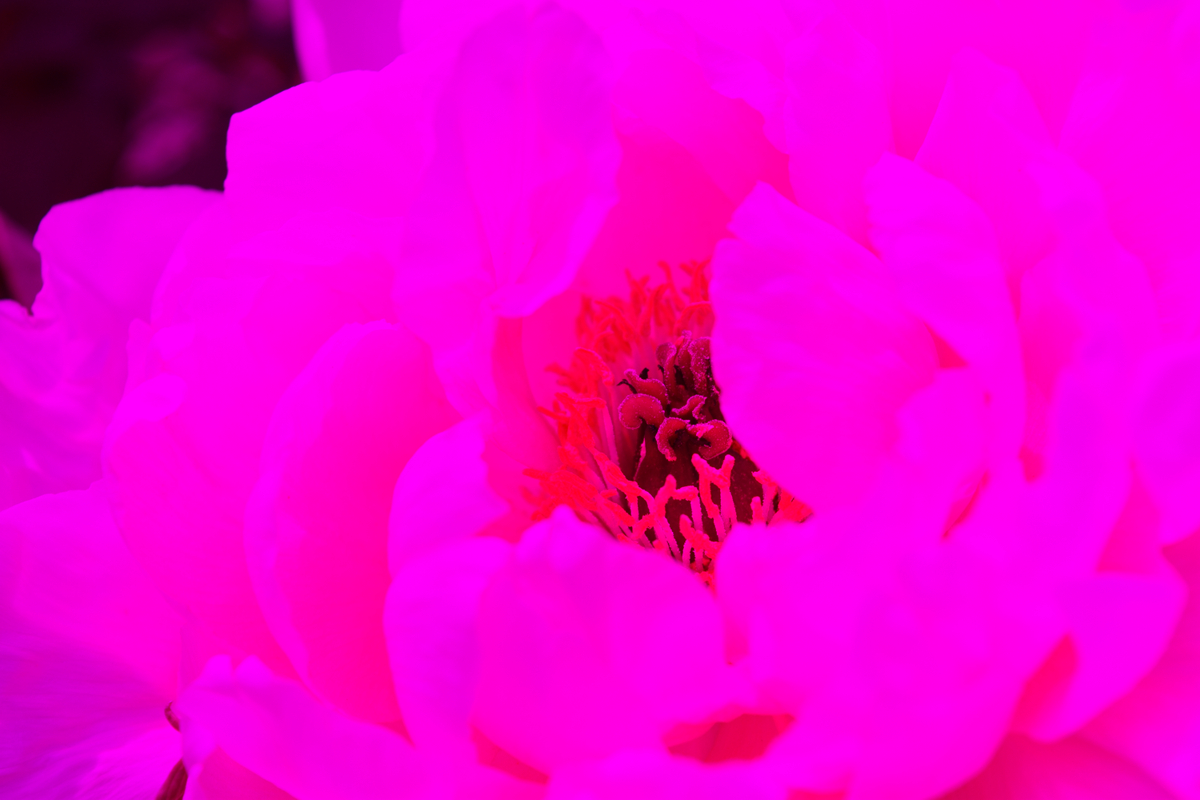
Rだけ透明度40%で、GとBは透明度100%で変換した画像。薄いシアン色(102, 255,255)のフィルターをかけたのと同じ。
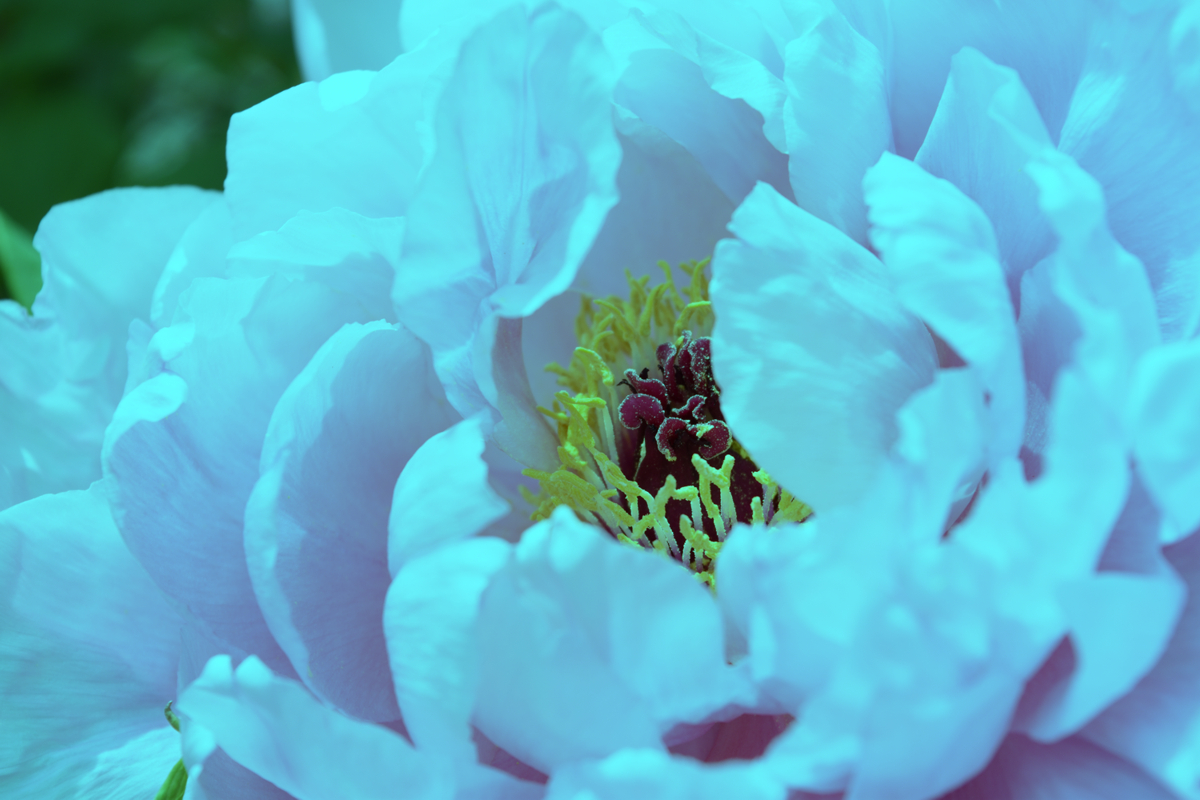
グラフィックスにおいては、薄いシアン色(102, 255,255)のフィルターを透明度0%でかけると表現する場合と、シアン色(0, 255,255)のフィルターを透明度40%でかけると表現する場合など、変換のパラメータとしては多くの可能性がある。
(再掲)

Kitaoka, A. (2011). A variety of color illusion: (2) Color constancy and two types of color filters. Journal of Color Science Association of Japan, 35(3), 234-236 (in Japanese).
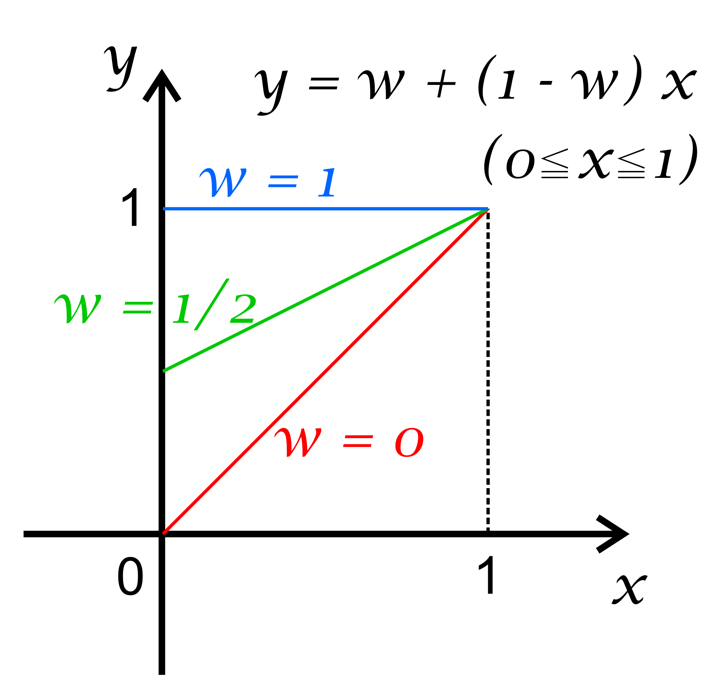
乗算的色変換の係数のグラフ
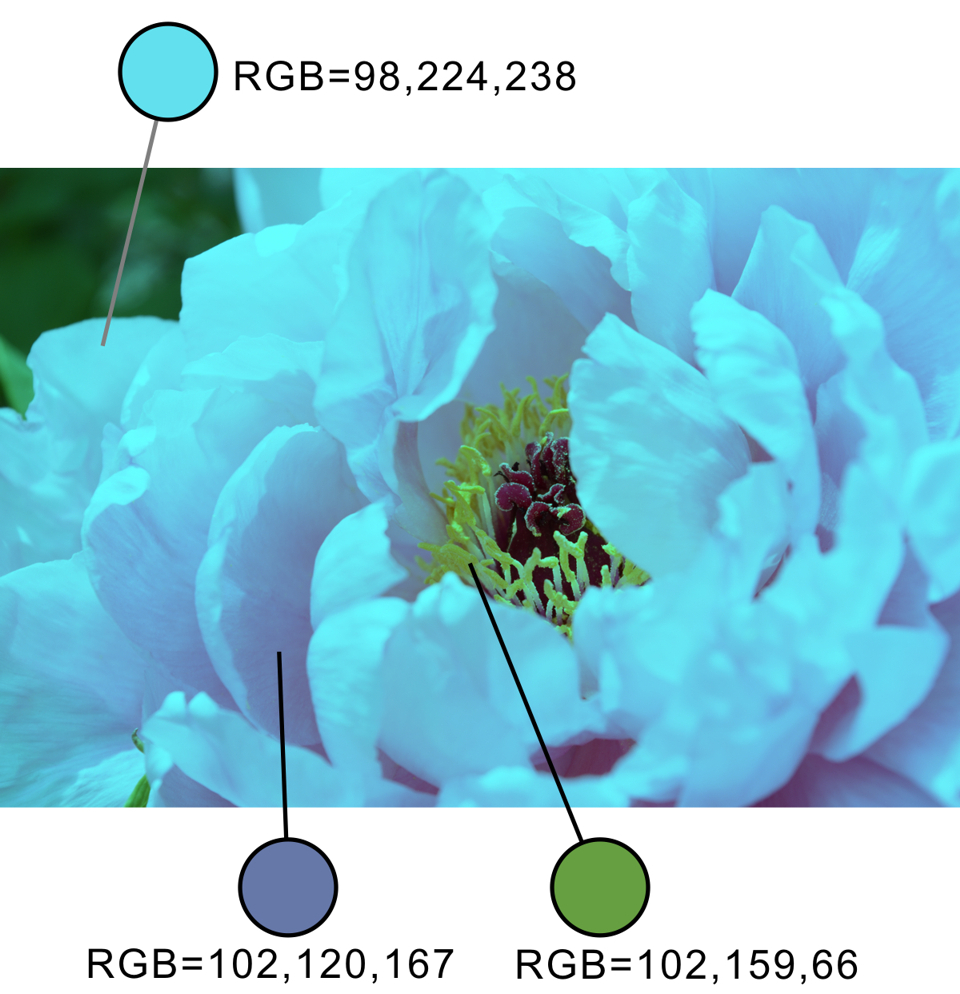
色の恒常性が現れる。 Color constancy appears.
Copyright Akiyoshi Kitaoka 2015 (Septemner 3)
続いて加法的色変換
オリジナルの写真 (2015年5月3日@須磨離宮公園)

透明度50%で白と合成した画像 (各ピクセルのRGB値はオリジナルの50%の値と白の50%の値を足したもの)
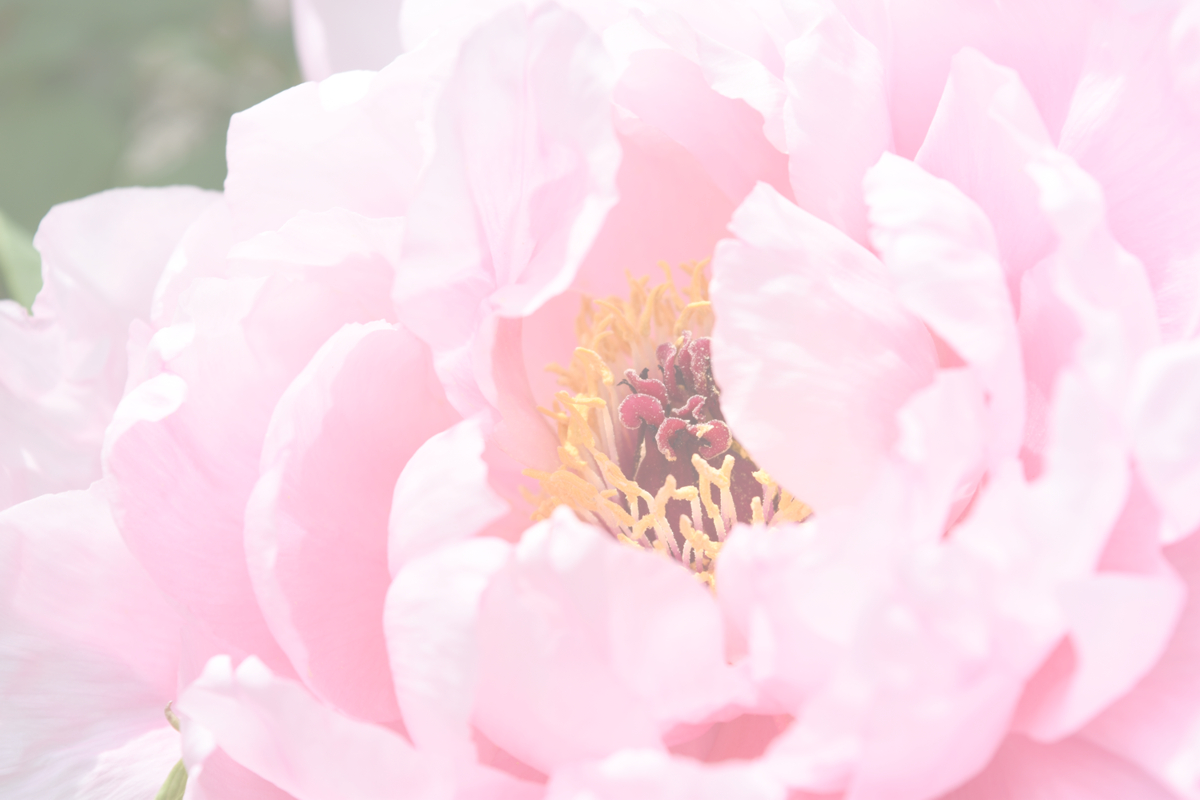
(MA_color_change04.exe を使用。ただし、bmpファイル専用。jpegファイル用はこちら → MA_color_change04jpeg.exe)
透明度10%で白と合成した画像 (各ピクセルのRGB値はオリジナルの10%の値と白の90%の値を足したもの)
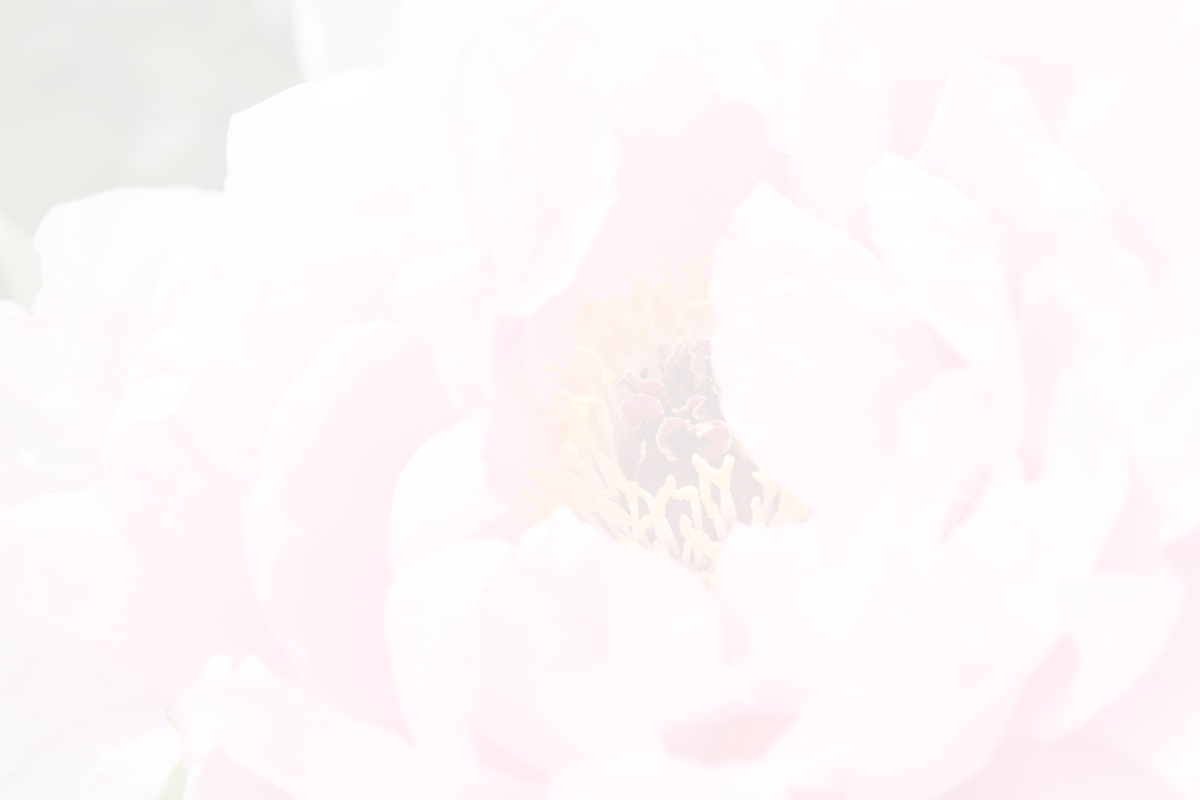
上の 「透明度10%で白と合成した画像」 を乗法的色変換の逆変換プログラムにかけて復元した画像
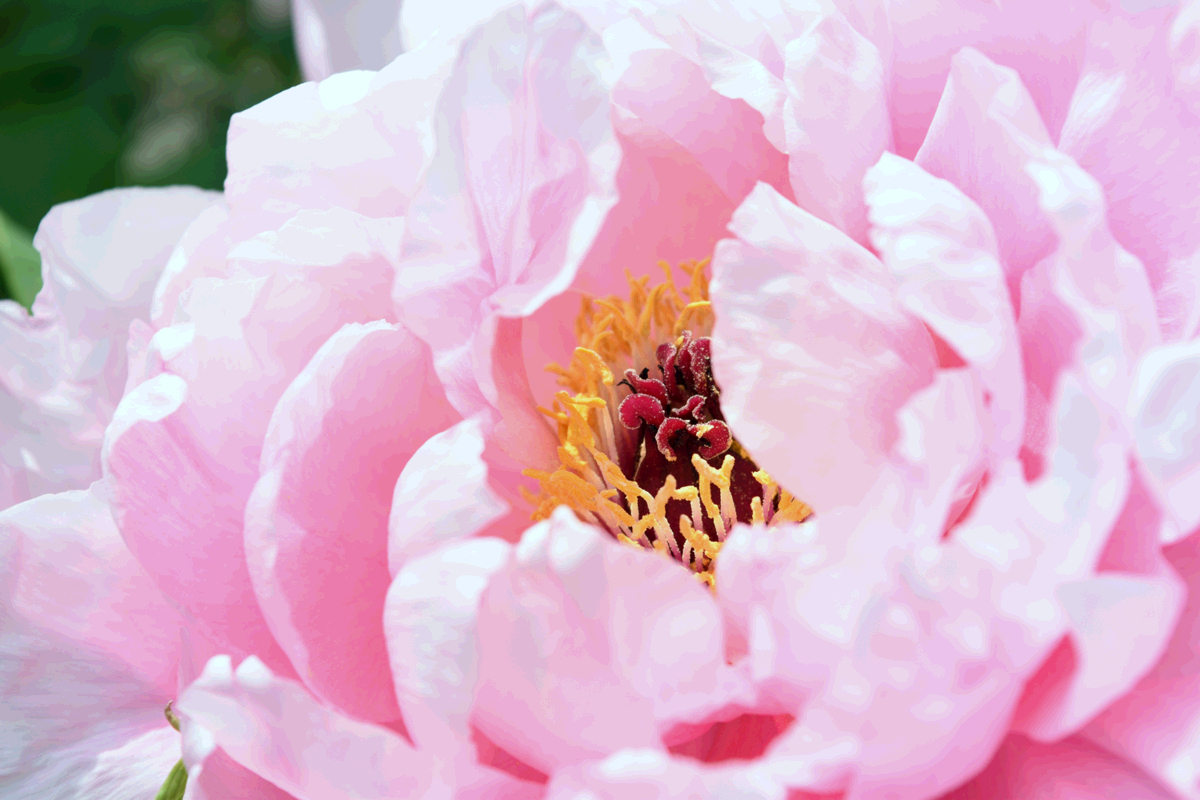
(AM_color_inverse03.exe を使用。ただし、bmpファイル専用。jpegファイル用はこちら → AM_color_inverse03jpeg.exe)
オリジナルの写真2 (2011年@自宅)
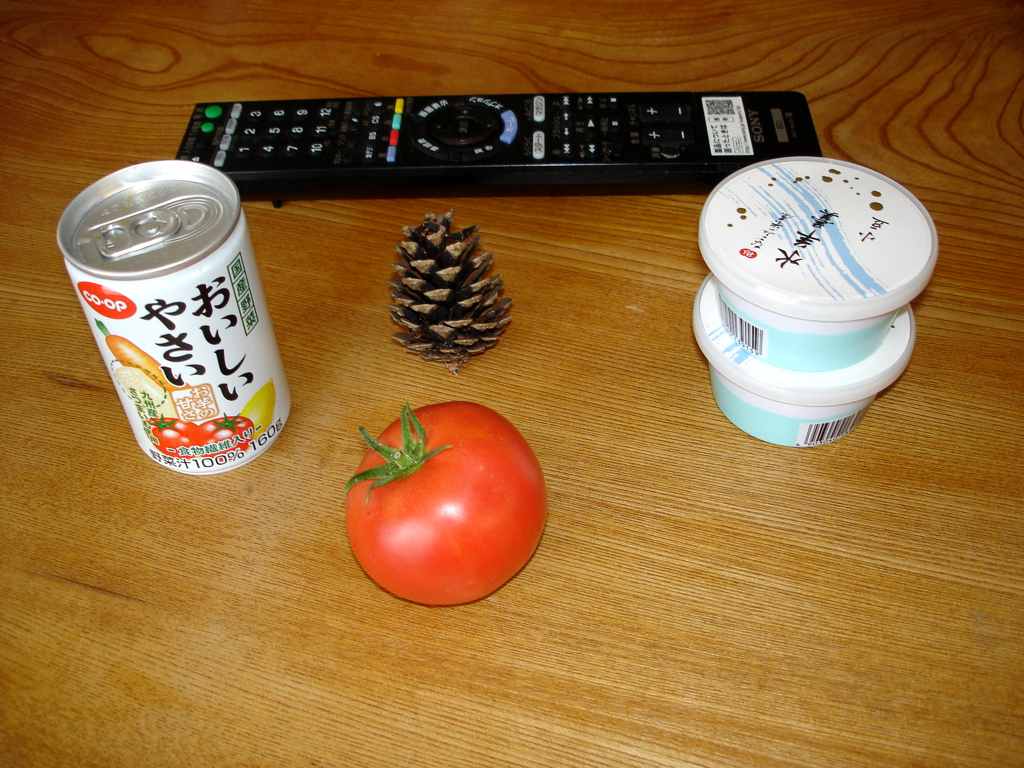
透明度50%でシアンと合成した画像 (各ピクセルのRGB値はオリジナルの50%の値とシアンの50%の値を足したもの)
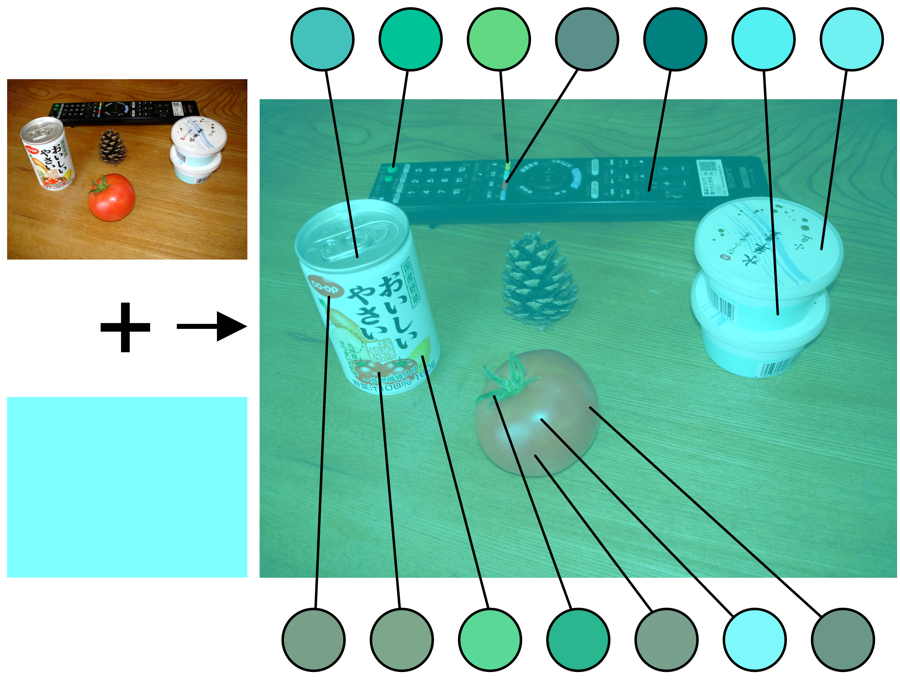
sRGBの値に基づく透明度50%でシアンと合成した画像 (各ピクセルのRGB値に対応する輝度はオリジナルの50%の値とシアンの50%の値を足したもの)
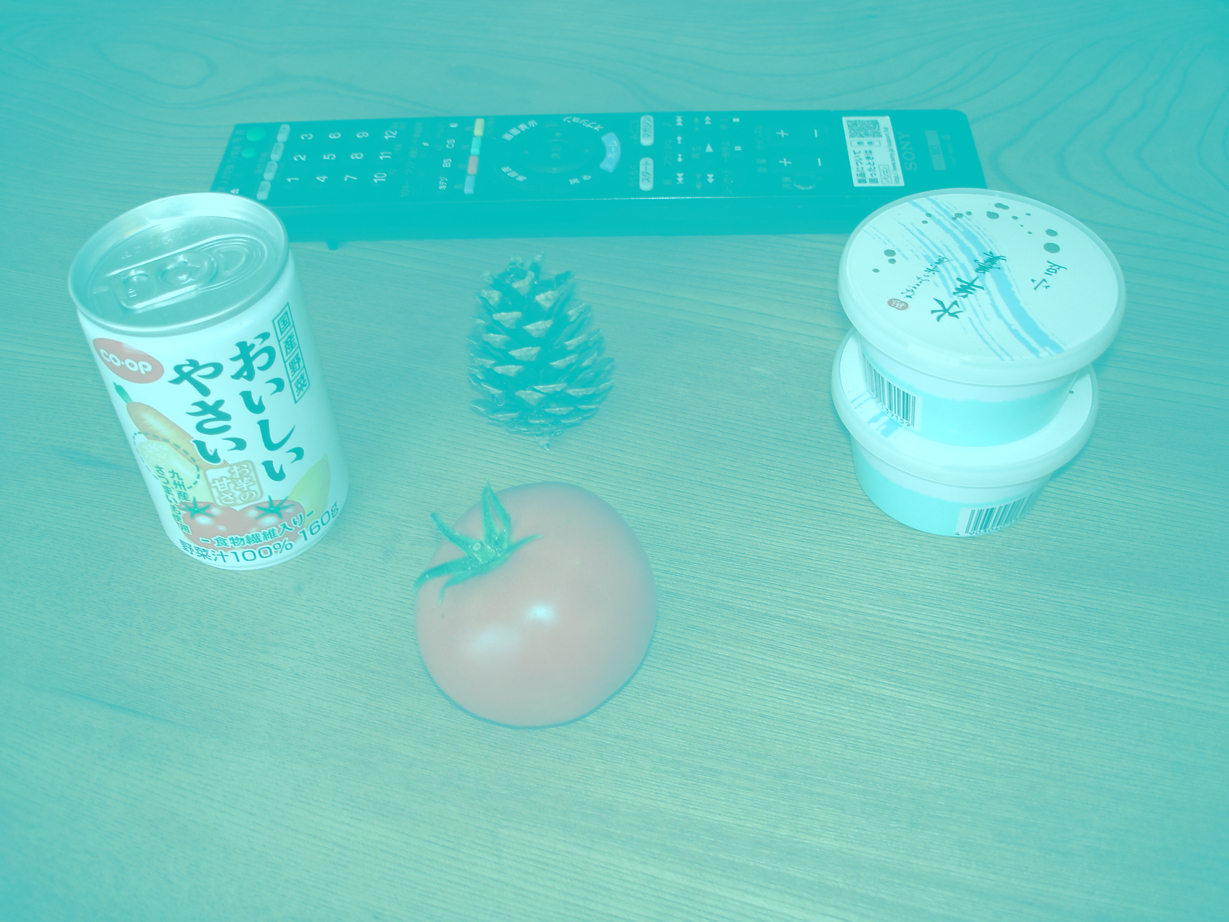

参考: 乗法的色変換でシアンのフィルターを透明度50%でかけた画像
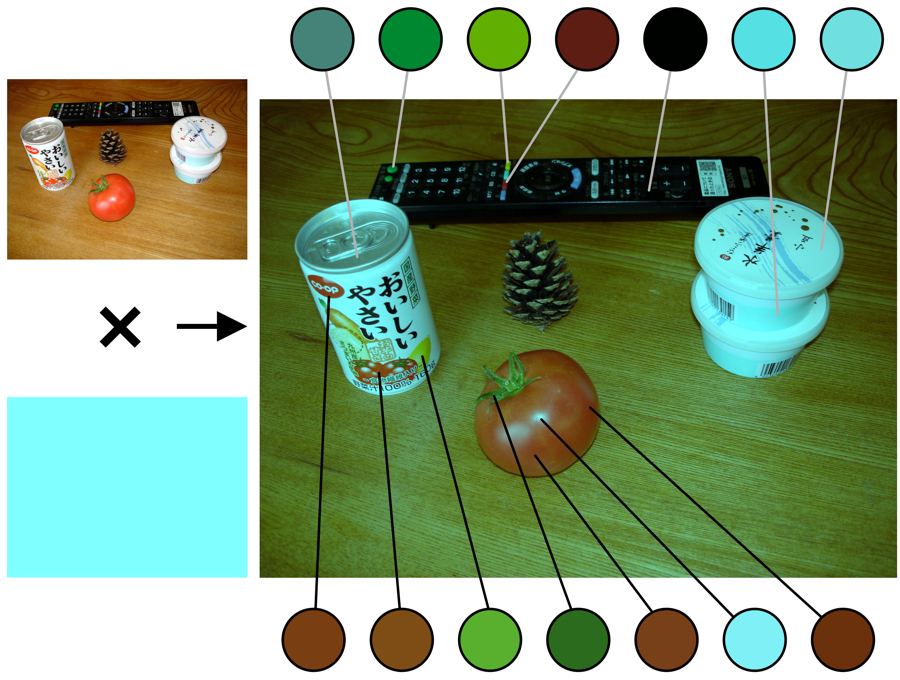
参考: 乗法的色変換で赤のフィルターを透明度70%でかけた画像

(再掲)

Kitaoka, A. (2011). A variety of color illusion: (2) Color constancy and two types of color filters. Journal of Color Science Association of Japan, 35(3), 234-236 (in Japanese).
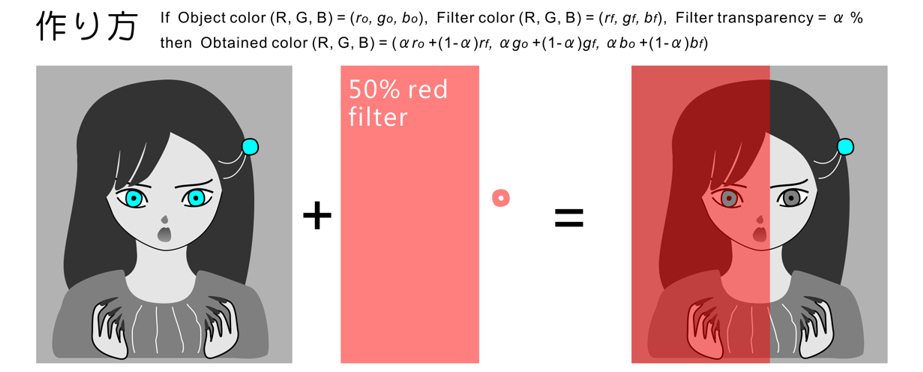
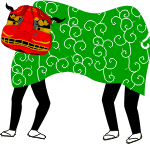 おしまい
おしまい


